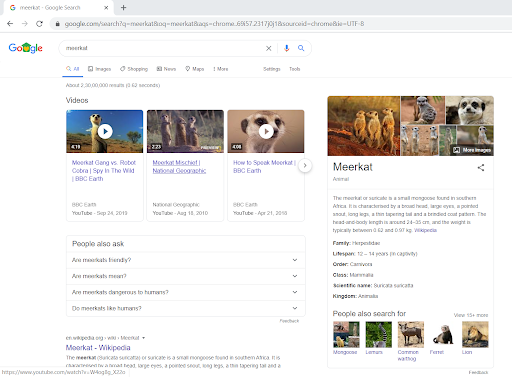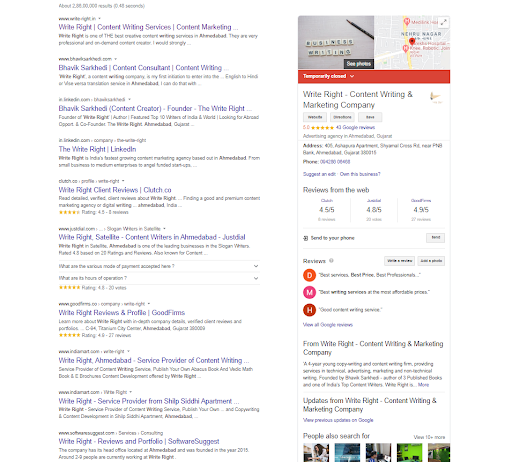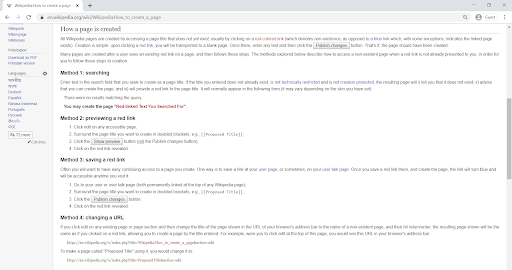Bhavik Sarkhedi's Blog, page 10
April 29, 2025
Bars & Cultures
Bars & Cultures
Bars & Cultures-Over a long period of time the society’s evolution in terms of norms and thinking is very slow. Especially in a country like India which is very rich and diverse in cultural aspect, it takes a lot of time for the mentality of the people to evolve.
Bars and pubs have been existing in India since a very long time ago and it can traced back to the era of Aryan Civilization but then these were the places meant only for the men-folk.
Even today, the stereotype thinking has not grown much. Women seen hanging out in Pubs and Bars are not considered to be cultured. But the modern generation sees it differently. This is a good progress and a good sign for the girls. Finally, we are marching on the road to equality of men and women. So, let the party begin.
SOUP AND THE SOULSOUP FOR THE SOULThe post Bars & Cultures appeared first on Bhavik Sarkhedi.
Milk and Mario
Milk and Mario
Milk and Mario-Every morning starts with annoying alarm tone. *Sigh* the new day starts and my cats are mewing for a bowl of milk. All they need is the milk bowl filled up to the brim.Milk and Mario And within a minute or two after pouring in milk it will vanish. Cute little kittens drink up all the milk at once. And then just purr, purr and purr.
With such a great head start to the day the day goes ahead very well. Busy at work I never ever worry of my kittens being hungry as they had a full bowl of milk and therefore I am rest assured at work. I ponder whether there is an analogy to this situation. Try relating this to your daily life. Yes, you got it right, your mother plays the very same role. She makes sure that you get the right nutrition at the very beginning of the day so that your day goes with full energy. Now, I feel bad about always being annoyed with my mother when she used to force me to finish the glass of milk, all she wanted was to give me the right nutrition. I love you mummy, Thanks for all the glasses of milk which you forced me to drink.
Super Mario
Video games brought a revolution when they hit the market in the early 90’s. Only the 90’s kids will understand the madness behind those games and competing with their friends in the race to complete the levels first. The craziness went to whole new level and kids started spending more time playing video games then outdoor games.
Though the graphics and other gaming features have evolved over the period of time but still the craziness that went with Super Mario and Contra like games cannot be compared to any other video game; the kids of that decade will know of what I am talking about 😉
The post Milk and Mario appeared first on Bhavik Sarkhedi.
A Deep Dive Into CEO, CTO, Executive Branding Agencies [April 2025]
Last updated: April 20, 2025
Building a strong executive brand has become a strategic necessity for leaders seeking to command attention, build trust, and shape public perception.
This comprehensive overview examines the leading executive, founder, and CEO branding agencies in the US, UK, and globally – and compares them side-by-side with rising player Ohh My Brand (led by Bhavik Sarkhedi and Sahil Gandhi). We’ll explore each firm’s service range, pricing (where available), SEO presence, clientele, global reach, social credibility, and notable clients. Finally, we’ll evaluate how these top agencies and experts stack up against Ohh My Brand, using Sarkhedi and Gandhi’s personal branding strengths as benchmarks.
Leading Executive Branding Agencies in the United StatesAscendant Group (Newark, DE)Founded in 2004 by Raoul Davis. Widely regarded as a world leader in CEO branding, Ascendant was one of the first agencies to institutionalize CEO/executive branding.
They have worked with Fortune 500 executives, Inc. 5000 CEOs, bestselling authors, and even retired athletes. Their integrated services span personal brand strategy, PR, publishing, and design. Ascendant has earned awards for web design and PR campaigns and was a founding member of the Forbes Agency Council.
With offices in the US, Canada, Europe, and the Middle East, they ensure global visibility for clients from China to MENA.
Notable Strengths:
17+ years in business
Recognized founder
Global footprint
High-profile clientele
SimplyBe. Agency (Chicago, IL)Founded in 2014 by Jessica Zweig, SimplyBe. is a personal branding and creative boutique helping C-suite leaders become visible thought leaders.
Their services include social content, PR, workshops, and corporate training. Clients include executives from Google, Pinterest, Salesforce, and Verizon. Zweig was named a Crain’s Notable Entrepreneur and featured in Forbes for her work.
They offer entry-level options (e.g., a $695 consultation with Brand Kit) and custom engagements—many of which exceed $40K annually.
Notable Strengths:
Strong SEO and content presence
Certified Women’s Business Enterprise
Visible team on LinkedIn
Client impact: increased industry recognition, speaking invites, and deal flow
Sterling Marketing Group (San Francisco, CA)Founded by Karen Tiber Leland, a renowned branding expert and author. With 20+ years in branding, SMG provides services such as personal brand strategy, content creation, media training, and even “color strategies.”
Karen has spoken at TEDx and advised high-profile leadership groups like YPO. She is a Forbes Council member and the author of The Brand Mapping Strategy.
Notable Strengths:
High credibility founder
Holistic brand-business alignment
Bespoke, high-touch engagements
Claire Bahn Group (Los Angeles, CA)Founded by former startup CEO Claire Bahn, this boutique agency blends personal branding and PR. They handle everything from messaging and social media to reputation management, video, and podcasts.
Claire’s approach: “We do the work, not just consult,” which appeals to time-poor executives. Results are tracked through visibility metrics and lead flow.
Notable Strengths:
ROI-focused execution
High client satisfaction
Direct access to senior talent
Delightful Communications (Seattle, WA)Founded in 2012 by ex-Microsoft executive Mel Carson. Delightful offers executive branding, influencer marketing, social media, and creative studio services.
Their impressive client list includes Microsoft, Intel, Deloitte, Facebook, and Accenture. The agency emphasizes people-first storytelling and brand building.
Notable Strengths:
Fortune 500 clientele
Collaborative, creative, agile team
Founder is a thought leader in digital branding
Other Notable MentionsHinge Marketing (VA): Focused on professional services firms. Uses deep research to build visible experts.
Ohh My Brand : Focused on CEO, CTO, Executive Branding Agency based in United StatesInfluence & Co. (MO): Helps executives gain thought leadership via content placements.
BrandYourself: Specializes in personal brand + ORM hybrid services. Offers both DIY (~$99/year) and full-service plans (up to $25K+). Top-tier campaigns typically run high four-figure monthly retainers.
Leading Executive Branding Agencies in the United Kingdom
The UK is emerging as a powerhouse for executive branding—where social media savvy meets strategic thought leadership. From bold startups to polished brand educators, these agencies are reshaping how founders and CEOs show up online.
Great Influence (Manchester, UK)Founded by Ash Jones in 2018, Great Influence is a specialist personal branding agency known for shaping the public image of the UK’s most recognizable business leaders.
Their strength lies in building influential online personas through end-to-end social media strategy, content creation, and brand partnerships. They’ve managed personal brands for figures like Gary Neville, psychologist John Amaechi OBE, and Jordan Brompton.
Through strategic storytelling, Great Influence helped Neville become one of the most-followed UK entrepreneurs and land a role on BBC’s Dragon’s Den.
Notable Strengths:
Exceptional social media presence
Results-backed case studies (Gary Neville’s brand is a standout)
Celebrity clientele in sports and business
Kurogo (London, UK)Positioned as “the UK’s #1 personal branding agency,” Kurogo focuses on helping founders and CEOs become thought leaders—especially on LinkedIn.
Their services center around authority positioning through content, PR, and high-performance LinkedIn strategies. While specific client names are sparse, their strong SEO presence and top rankings suggest growing influence within the UK startup ecosystem.
Notable Strengths:
Clear authority positioning
Strong SEO visibility
LinkedIn-centric branding approach
Blushush (London, UK)Co-founded by Sahil Gandhi, Blushush is a design-forward branding agency with a rebellious streak. Their mantra: “No boring brands.”
Blushush specializes in personality-driven websites, bold visual identity, and founder-first storytelling. With a cheeky, vibrant tone, they breathe life into stagnant brands. Their recent collaboration with Ohh My Brand signals their deeper move into executive branding.
Sahil, known as The Brand Professor, has earned a loyal following as a branding mentor and visual identity strategist in both the UK and India.
Notable Strengths:
Standout visual storytelling
High-conversion founder websites
Sahil’s personal brand boosts agency authority
Klowt (UK)Klowt positions itself as a personal branding partner for founders and freelancers who want to stand out boldly. Branded as “The Bold Social Architects,” Klowt is LinkedIn-forward—focusing on profile makeovers, content calendars, and online authority-building.
Notable Strengths:
Strong social content strategy
Focused on freelance and early-stage founder visibility
Emphasis on bold, scroll-stopping posts
Programs & Ecosystem HighlightsDent’s Key Person of Influence (KPI) by Daniel Priestley – A personal branding accelerator for entrepreneurs looking to build influence.
Thought Leadership PR firms – London-based PR specialists help founders gain media visibility and platform credibility through tailored campaigns.
While not agencies per se, these programs fuel the broader UK ecosystem supporting personal brand growth for executives.
Other Mentions in the UK LandscapeBrand of a Leader – Though based in Canada, they operate actively in the UK and are covered later in the global section.
Influence Digital and The PHA Group – PR agencies in London offering bespoke branding and media support for CEOs.
Among these, Great Influence remains a standout UK-grown agency with a proven track record of crafting compelling executive narratives at scale.
Top Global and International Players in Executive BrandingBeyond the US and UK, a new league of agencies is redefining personal branding on a global scale. These players offer elite, niche, or tech-driven services—often serving clients across continents while pioneering new frontiers in executive visibility.
Prestidge Group (Dubai / NYC / London)Founded in 2016 by Briar Prestidge, this high-end personal branding and PR firm caters to CEOs, celebrities, investors, and public figures around the world.
Offering 360° services—brand audits, social media, media relations, podcast production, government introductions, and more—Prestidge Group positions itself at the luxury end of the branding spectrum. Their pioneering work in Metaverse PR reflects a cutting-edge approach to digital presence.
Founder Briar Prestidge was named among the Top 100 Most Influential People in the UAE. A serial entrepreneur, her background in executive communications adds sharp credibility.
Notable Strengths:
Offices in the Middle East, Europe, and the US
Elite clientele (including HNWIs)
Strong global media presence (NYT, Forbes, Arabian Business)
Bespoke, high-touch service model for top-tier leaders
Brand of a Leader (Montreal, Canada)Launched in 2020 by Marina Byezhanova and Stefano Faustini, Brand of a Leader quickly gained traction with Gen X entrepreneurs and CEOs drawn to authentic storytelling.
They offer flexible packages: from brand briefs and LinkedIn revamps to speaker kits, ghostwriting, and podcast outreach. Their live interview series Voice of a Leader embodies their ethos—every leader’s story deserves a platform.
Notable Strengths:
Strong media coverage and fast growth
Highly personalized storytelling approach
Focus on leaders outside the traditional mold
Community-driven model (aiming for 1M+ brand-first professionals)
Valuables (Austin, TX – formerly Waller & Company)Founded in 2014 by Dr. Talaya Waller, Valuables has evolved from boutique agency to an AI-powered personal brand management platform.
Originally working with clients from Amazon, Google, Vogue, and the NBA, Valuables now helps enterprises quantify and monetize executive brand equity. With real-time analytics and brand strategy automation, this platform transforms personal branding into a scalable asset.
Dr. Waller’s research-backed methods (featured in 300+ university libraries and TEDx stages) underpin Valuables’ academic and technological credibility.
Notable Strengths:
First-of-its-kind SaaS in personal branding
Deep research foundation (10+ years)
Corporate-friendly platform for ROI-driven leadership branding
TEDx and scholarly influence
Funky Marketing (Novi Sad, Serbia)A bold agency rooted in demand generation, Funky Marketing helps B2B tech founders build LinkedIn authority while directly driving business growth.
They specialize in marrying thought leadership with lead generation—a rare hybrid that makes them especially valuable to startup founders in competitive spaces.
Notable Strengths:
Niche focus on B2B tech
Agile content creation and personal storytelling
Competitive pricing with global delivery
Revenue-first branding approach for startups
Ecosystem Mentions & PlatformsThinkers360 and LinkedIn Creator Programs: Offer visibility platforms for executives looking to scale their personal brands.
Pentagram, Landor, Interbrand: While these are legendary branding firms, their focus is primarily on corporate identity—not individual leaders.
The agencies featured above operate in a specialized space where the executive is the brand—and their work speaks directly to this era’s new currency: influence.
Individual Personal Branding Experts Dominating the NicheWhile agencies build ecosystems, some individuals are the brand. These thought leaders didn’t just advise on personal branding—they lived it, refined it, and made it their calling card. Here are the names reshaping the space with their voice, visibility, and vision.
Bhavik SarkhediA globally recognized personal branding specialist, Bhavik is the founder of Ohh My Brand and author of eight books. He’s frequently featured in Forbes, Entrepreneur, and top-tier platforms for his pioneering work in digital storytelling, SEO, and authority building.
Originating from India, Bhavik’s ventures—like Write Right—prove how content-led ecosystems can scale brands organically. Forbes named him a Global Personal Branding Expert (2025), and his articles regularly trend for their practical, trend-forward take on executive branding.
Dominance:
Bhavik’s own brand—backed by TEDx talks, bestselling books, and global client wins—acts as proof of concept. He’s helped elevate CEOs, founders, authors, and influencers by aligning narrative clarity with SEO-driven visibility. Today, he’s ranked among the top personal branding experts worldwide, and for many, he’s the benchmark.
Known as The Brand Professor, Sahil is a London-based strategist and co-founder of Blushush. He’s built his reputation on merging design clarity with brand depth—helping clients craft brands that look good and feel real.
From Europe to Asia, Sahil has worked with 3x founders, NYT bestselling authors, and disruptive startups. His personal LinkedIn presence reflects the same design-first, insight-rich ethos he brings to client work.
Dominance:
Sahil’s impact is visual and strategic. He was recently ranked among the top 20 personal branding experts globally, recognized for turning raw potential into influential brand architecture. Whether it’s a founder’s story or a startup’s visual identity, his clarity and creativity drive conversion.
CEO of SimplyBe., Jessica has built more than a business—she’s built a movement. Her bestselling book “Be: A No Bullsht Guide to Increasing Your Self Worth and Net Worth by Simply Being Yourself”* captures her core philosophy: authenticity wins.
She’s become a face of the personal branding movement for leaders navigating corporate life. Forbes features, keynote spots, and a community of followers reinforce her thought leadership.
Dominance:
Clients don’t just trust SimplyBe.—they trust Jessica. Her own brand amplifies her agency’s impact. She walks the talk, and that’s rare.
Primarily known for SEO, Neil is a case study in content-powered personal branding. He built companies like NP Digital and Crazy Egg on the back of his name—and blog.
His personal brand ranks across thousands of marketing keywords, generates millions in leads, and commands authority across every digital platform. He hasn’t sold personal branding services directly, yet dominates the space by default.
Insight:
Neil’s brand proves one thing: visibility + value = influence. He turned consistency into legacy—without ever calling it personal branding.
The godfather of marketing storytelling, Seth needs no agency to carry his voice. With iconic books like Purple Cow and daily blog posts that spark global conversations, his brand is timeless.
He doesn’t chase virality—he shapes ideas that last.
Dominance:
Seth’s success is a masterclass in originality, clarity, and frequency. His voice doesn’t sell—it transforms.
Founder of Prestidge Group, Briar is one of the few female entrepreneurs redefining personal branding in the Middle East. With ventures spanning fashion, media, and global PR, she’s built a multi-dimensional personal brand rooted in innovation and luxury.
Her features in global media and accolades like Top 100 Most Influential People in the UAE only add to her authority.
Dominance:
Briar’s brand crosses industries and platforms—LinkedIn, fashion, print, and live stages. She doesn’t represent the new era of branding—she embodies it.
William Arruda – A pioneer in personal branding, founder of Reach Branding, and author of Career Distinction.
Dorie Clark – Author of Reinventing You, she coaches executives on storytelling and reinvention.
Goldie Chan – Known for vibrant, insightful LinkedIn videos on branding and community building.
Gary Vaynerchuk – Founder of VaynerMedia. His daily vlogs, keynote rants, and unfiltered brand made him the poster child of CEO-as-influencer.
Ohh My Brand vs. Top Branding Agencies and Experts: A Side-by-Side ComparisonNow, let’s compare Ohh My Brand (OMB) – along with the personal brand firepower of Bhavik Sarkhedi and Sahil Gandhi – against other leading players in terms of credibility, SEO strength, growth potential, niche positioning, and storytelling style. The table below summarizes how OMB and its founders stack up with a few top competitors:
Agency / ExpertCredibility & ReputationSEO Authority & PresenceGrowth Potential & ReachNiche PositioningStorytelling & OriginalityOhh My Brand(Bhavik Sarkhedi & Sahil Gandhi)High: Globally recognized founders (Forbes-featured expert & “Brand Professor”) lend OMB instant credibility. Proven results for CEOs, authors, influencers. Partnerships (e.g. Blushush) enhance authority.Strong: OMB leverages Bhavik’s 12+ years in SEO – ensuring clients rank well and content is discoverable. OMB’s own content (Medium, LinkedIn) ranks for executive branding keywords.Rising Fast: Founded 2013, now globally active. Agile and scalable via partnerships (US, UK, India reach). With personal founder brands driving word-of-mouth, OMB is poised for rapid international growth.Holistic Personal+Corporate: Positions itself at the intersection of personal branding, SEO, and design – a one-stop shop “where design meets influence.” Especially targets founders of high-growth companies seeking both image and influence.Original & Authentic: Emphasizes “high-impact” content and authentic narratives over hype. Storytelling is a core pillar – Sarkhedi’s content strategy background means every founder’s story is uniquely crafted. Sahil’s design-led storytelling adds visual originality.SimplyBe. Agency(Jessica Zweig)High: Well-known in the US; featured by Forbes, Inc., etc. Corporate clients (Google, Verizon) bolster credibility. Jessica’s personal brand (award-winning entrepreneur, author) adds trust.Strong: SimplyBe’s site and founder are highly visible. Jessica’s blogs and interviews on LinkedIn/Forbes drive SEO traffic. The agency ranks on Google for personal branding services in the Midwest.Established: Steady growth since 2014. Now bi-coastal (Chicago and LA) and attracting global clients. Potential to expand further via Jessica’s thought leadership tours and her book’s success.Empowering Leaders: Focuses on authenticity and turning executives into thought leaders. Niche in “personal branding as an act of service” – helping clients clarify their message and share knowledge. Particularly strong with corporate executives and female leaders (WBENC certified).Bold & Relatable: Storytelling style is motivational and branding is packaged into frameworks (e.g., “SimplyBe. Values” like Be. Authentic, Be. Generous). Content often includes personal anecdotes (Jessica openly shares her journey) to inspire clients to be authentic.Prestidge Group(Briar Prestidge)High: Elite reputation in UAE/UK/US. Media features (NYT, Forbes) give third-party validation. Founder is among UAE’s top 100 influencers. Trusted by HNWIs and celebrities globally.Moderate: Strong PR presence but less focus on SEO content. Relies more on earned media and prestige than search rankings. Social proof on Instagram/LinkedIn is solid.High but Niche: Rapid growth since 2016, now with offices on 3 continents. Serves a niche of ultra-high-profile clients. Growth is more about deepening services (like Metaverse PR) than high volume.Luxury Personal Branding: Premium PR-driven personal branding firm. Niche in handling “celebrity CEOs” and government-linked personalities. Offers image management, keynote bookings, and access to elite networks.Sophisticated & Strategic: Storytelling is refined and professional – focused on thought leadership and credibility. They produce documentary-style content and secure high-stakes visibility like TEDx talks.Brand of a Leader(Marina Byezhanova)Growing: Quickly building reputation via client success and media mentions. Founders’ personal narratives (immigrant journey, etc.) deeply resonate with Gen X entrepreneurs.Good: Active content marketing – blogs, a video series, and social media presence support SEO. Featuring clients boosts both agency and client visibility.High: Launched in 2020 and growing quickly. Flexible packages attract startups and mid-size execs. Focus on building a 1M+ strong personal branding community hints at major future growth.Entrepreneurs & Gen X: Specializes in helping nontraditional founders craft authentic stories. Strong appeal to underrepresented or non-corporate leaders.Personal & Inspirational: Content is highly story-driven and human. Their co-creative process delivers original personal narratives that resonate and inspire.Ascendant Group(Raoul Davis)Very High: 20-year track record with Fortune 500 leaders. Industry firsts, multiple awards, and founding Forbes Council member. Davis is a frequent speaker at elite platforms.Moderate: Relies more on referrals and reputation. Their site has authority but is not as content-heavy. Presence in “CEO branding” searches exists due to longevity.Sustained & Global: Active in multiple countries. Growth via referrals and global practices in China, MENA, etc. Remains strong for high-level executive branding.Integrated CEO Branding: Combines PR, book publishing, and executive presence. Unique in aligning CEO personal brand with corporate strategy for maximum halo effect.Professional & Legacy-Focused: Storytelling is rooted in credibility, impact, and legacy. Tailored to influence stakeholders from investors to boards.Key TakeawaysExecutive branding has become a crucial strategy for leaders, and the landscape is populated by both boutique specialists and seasoned agencies. Ohh My Brand (Bhavik Sarkhedi & Sahil Gandhi) exemplifies the new wave – integrating personal branding, SEO, and design to build a leader’s digital authority from all angles.
They hold their own against longer-established firms, thanks to credible founders and an agile, story-first approach. Traditional leaders like Ascendant Group and Prestidge Group bring extensive experience, high-end networks, and proven results for top-tier clients, whereas agile agencies like SimplyBe. and Brand of a Leader offer fresh, original takes and accessible packages for a broader range of leaders.
Consider These Factors When Choosing a Personal Branding Partner:Credibility vs. Creativity: Established firms come with press clout, while newer agencies often bring more inventive storytelling and personalized service.SEO and Digital Presence: Your agency should rank well online themselves. OMB’s SEO-first model or SimplyBe.’s LinkedIn content are prime examples.Service Scope: Know what you need—PR, content, design, SEO—and choose a partner that covers those gaps. Some are full-service, others niche specialists.Personal Fit: Branding is personal. Chemistry, values, and vision matter. Find an agency that doesn’t just shape your image, but reflects your essence.In conclusion, executive branding is about building a legacy, not just a LinkedIn profile. The leading agencies and experts highlighted here all excel in crafting memorable leader brands – but each through their own lens. Whether you’re a rising founder or a seasoned CEO, choosing the right partner can unlock new levels of influence, trust, and opportunity.
As Sahil Gandhi aptly said, “Branding is no longer just about aesthetics—it’s about building trust.” The agency or expert you entrust with your personal brand should not only make you look good – they should make sure your voice is heard, your story remembered, and your reputation respected.
With the insights and comparisons above, you can make a well-informed choice and let your brand speak louder than ever.
The post A Deep Dive Into CEO, CTO, Executive Branding Agencies [April 2025] appeared first on Bhavik Sarkhedi.
April 22, 2025
Must-Read 20 Love Story Books Online [Audience Loved]
Updated/Edited on 27th June, 2024: This is one of the most-read blogs on my website. Thank you so much for showing so much love to this post. I feel grateful (Joining Hands Indian Style). I am an independent verified SEO writer, best-selling author, reliable ghostwriter and personal branding expert who helps entrepreneurs and startups nurture their online/digital presence. Guaranteed results in SERP (Search Engine Results Page). Lead Generator via LinkedIn. See my portfolio here and follow me on socials: www.linktr.ee/sarkhedibhavik Thank you. Keep reading informational blogs. Keep sharing. Reach out to me for any feedbacks and suggestions on content writing, personal branding and digital marketing 🙂 🙂
Last updated: April 23, 2025
___________________________________________________________________________________________________________
Let’s get on an enchanting literary journey as we unveil a curated collection of 20 must-read love story books available online to captivate your heart and soul. From timeless classics to contemporary gems, this selection celebrates the magic of romance in all its forms.
Whether you crave epic tales of love overcoming adversity, modern narratives exploring the complexities of relationships, or heartwarming stories that tug at your emotions, these carefully chosen books promise to transport you to worlds where love reigns supreme.
Join us in delving into the pages of passion, connection, and enduring love with our handpicked selection.
# Title Author 1 The Unproposed Guy Bhavik Sarkhedi 2 A Touch of Eternity Durjoy Dutta 3 When Love Came Calling Preeti Shenoy 4 You’re The Password to My Life Sudeep Nagarkar 5 You Are My Dreams Now Ravinder Singh 6 That Kiss in the Rain Novoneel Chakraborty 7 The Marriage Clock Zara Raheem 8 The Marvellous Mirza Girls Sheba Karim 9 You Are Still The One Himanshu Rai 10 One & A Half Love Story Vishal Anand 11 You Are My Reasons to Smile Arpita Vageria 12 Key to My Soul Probal Mazumdar 13 Dating Dr. Dil Nisha Sharma 14 Without You Preethi Venugopala 15 The Worst Daughter Ever Aarti V Raman 16 Bound by Hatred MV Kashi 17 Twisted Knots Guzaarish 18 The Jasmine Throne Tasha Suri 19 Accidentally Married Andaleeb Wajid 20 The Book of Everlasting Things Aanchal Malhotra1. Bhavik Sarkhedi – The Unproposed Guy

Bhavik Sarkhedi – The Unproposed Guy
Bhavik Sarkhedi introduces readers to a captivating world of romance in his latest work, ‘The Unproposed Guy.’ With an engaging narrative, Sarkhedi weaves a tale that explores the intricacies of love, commitment, and self-discovery. The novel introduces relatable characters navigating the complexities of modern relationships, offering a fresh perspective on the dynamics of romance. Sarkhedi’s storytelling prowess shines as he delves into the emotional landscape of his characters, creating a compelling narrative that resonates with readers. ‘The Unproposed Guy’ stands as a testament to Sarkhedi’s ability to craft thought-provoking and heartfelt stories that leave a lasting impression.
2. Durjoy Dutta – A Touch of EternityDurjoy Datta, a literary maestro, unveils another masterpiece with “A Touch of Eternity.” This enchanting novel immerses readers in a world where love transcends time, weaving a tale that resonates with emotion and timeless connection. With his signature blend of romance and depth, Datta crafts characters that linger in the heart, and a narrative that navigates the complexities of relationships with finesse. “A Touch of Eternity” promises an immersive journey, inviting readers to explore the profound dimensions of love that echo through the ages. Datta’s storytelling prowess once again proves why he is a celebrated name in contemporary Indian literature.

Durjoy Dutta – A Touch of Eternity
Source: goodreads.com
3. Preeti Shenoy – When Love Came CallingIn “When Love Came Calling” by Preeti Shenoy, the acclaimed author unveils a poignant exploration of love’s unexpected twists. Shenoy skillfully weaves a tale that captures the intricacies of human connections, deftly portraying characters navigating the labyrinth of emotions. Set against a backdrop of life’s uncertainties, the novel unfolds with Shenoy’s signature blend of warmth and realism, making it in the list of must-read 20 love story books. “When Love Came Calling” is a testament to Shenoy’s ability to craft stories that resonate deeply, inviting readers to reflect on the transformative power of love and the profound impact it can have on the course of our lives.

Preeti Shenoy – When Love Came Calling
Source: goodreads.com
4. Sudeep Nagarkar – You’re The Password to My LifeSudeep Nagarkar’s “You’re The Password to My Life” intricately weaves a poignant tale of love, loss, and redemption. Set against the backdrop of Mumbai, the novel follows the journey of Sahil and Kriti as they navigate the complexities of relationships and personal growth. Nagarkar’s narrative skillfully explores the transformative power of love, where emotions become the key to unlocking life’s challenges. With a perfect blend of romance and introspection, the novel captivates readers with its relatable characters and a storyline that resonates long after the last page. “You’re The Password to My Life” stands as a testament to Nagarkar’s storytelling prowess.

Sudeep Nagarkar – You’re The Password to My Life
Source: goodreads.com
5. Ravinder Singh – You Are My Dreams NowIn “You Are My Dreams Now,” Ravinder Singh once again captures hearts with a soul-stirring narrative that navigates the delicate realms of love and longing. Singh’s pen weaves a tapestry of emotions, creating a poignant symphony that resonates with readers. The novel immerses us in a world where dreams intertwine with reality, and love becomes an unspoken language. With his signature blend of raw honesty and heartfelt storytelling, Singh crafts a tale that lingers in the reader’s soul, affirming his status as a maestro in the realm of contemporary romance literature. “You Are My Dreams Now” is an evocative journey through the echoes of the heart.

Ravinder Singh – You Are My Dreams Now
Source: goodreads.com
6. Novoneel Chakraborty – That Kiss in the RainNovoneel Chakraborty, a maestro of romantic fiction, enchants readers with his evocative tale, “That Kiss in the Rain.” This novel weaves a narrative of love, destiny, and the profound impact of a single moment. Set against the backdrop of unforeseen twists and emotional turbulence, Chakraborty crafts a poignant love story that lingers like the scent of rain-soaked earth. The book explores the transformative power of love, leaving readers spellbound with its eloquent prose and an unforgettable kiss that resonates through the pages, creating a symphony of emotions that captures the essence of timeless romance.

Novoneel Chakraborty – That Kiss in the Rain
Source: goodreads.com
7. Zara Raheem – The Marriage ClockZara Raheem’s debut novel, “The Marriage Clock,” intricately weaves a narrative that navigates the complex intersection of tradition and modernity. The story revolves around Leila, a spirited young woman facing familial pressure to find a suitable husband. As her parents set a ticking “marriage clock,” Leila embarks on a year-long quest to meet potential partners, leading to a journey of self-discovery, emerging as one of the must-read 20 love story books. Raheem’s writing skillfully addresses cultural expectations, love, and identity, offering readers a refreshing take on the challenges of balancing tradition with personal aspirations. “The Marriage Clock” is a compelling exploration of relationships, choice, and the pursuit of happiness.

Zara Raheem – The Marriage Clock
Source: goodreads.com
8. Sheba Karim – The Marvellous Mirza GirlsSheba Karim, a literary virtuoso, weaves magic with “The Marvellous Mirza Girls.” In this captivating novel, Karim explores the lives of the Mirza sisters, infusing their world with humor, warmth, and cultural richness. Set against the backdrop of a bustling Pakistani-American community, the story unfolds with charm and authenticity. Karim’s narrative prowess navigates the complexities of identity, family, and the pursuit of dreams. “The Marvellous Mirza Girls” is a testament to Karim’s ability to craft nuanced stories that resonate, inviting readers into a world where the ordinary becomes extraordinary through the lens of familial bonds and the pursuit of self-discovery.

Sheba Karim – The Marvellous Mirza Girls
Source: goodreads.com
9. Himanshu Rai – You Are Still The One“Himanshu Rai – You Are Still The One” is a soul-stirring ode to enduring love. Rai’s poignant lyrics and melodious composition create an emotional resonance that lingers. The song weaves a tale of timeless commitment, echoing the sentiment that true love transcends the tests of time. With heartfelt vocals and a musical arrangement that tugs at the heartstrings, Rai captures the essence of a love that remains unwavering, making it in the list of must-read 20 love story books. “You Are Still The One” is not just a song; it’s a musical journey that celebrates the enduring power of love, making it a poignant addition to the realm of soulful compositions.

Himanshu Rai – You Are Still The One
Source:goodreads.com
10. Vishal Anand – One & A Half Love Story“Vishal Anand’s ‘One & A Half Love Story’ unfolds a captivating narrative that transcends conventional romance. With a unique blend of heartwarming emotions and unexpected twists, Anand crafts a tale that stands apart in the realm of love stories. The protagonist’s journey, navigating the complexities of relationships and self-discovery, adds a refreshing dimension to the narrative. ‘One & A Half Love Story’ is a testament to Anand’s storytelling prowess, inviting readers into a world where love is not merely a destination but a transformative journey, rich with surprises. Anand’s distinctive voice promises an immersive and memorable reading experience.”

Vishal Anand – One & A Half Love Story
Source: goodreads.com
11. Arpita Vageria – You Are My Reasons to SmileArpita Vageria’s “You Are My Reasons to Smile” is a heartwarming tale that radiates the warmth of love and resilience. In this poignant narrative, Vageria crafts a story of hope, strength, and the transformative power of relationships. The novel beautifully captures the essence of finding joy in life’s simplest moments, portraying a journey where love becomes the driving force behind overcoming challenges. With a delicate touch, Arpita Vageria invites readers into a world where smiles are not just expressions but profound connections, making “You Are My Reasons to Smile” a touching exploration of the human heart’s capacity for healing and happiness.

Arpita Vageria – You Are My Reasons to Smile
Source: goodreads.com
12. Probal Mazumdar – Key to My SoulProbal Mazumdar’s “Key to My Soul” is a poetic odyssey that unravels the depths of emotions, laying bare the intricacies of the human soul. In this evocative collection, Mazumdar weaves verses that resonate with raw authenticity, touching upon love, longing, and introspection. Each poem is a key, unlocking the doors to profound self-discovery and shared human experiences. With lyrical finesse, Mazumdar invites readers into the sanctuary of his soul, where the echoes of passion and vulnerability reverberate. “Key to My Soul” stands as a testament to Mazumdar’s poetic prowess, offering readers a poignant journey through the corridors of the heart.

Probal Mazumdar – Key to My Soul
Source: goodreads.com
13. Nisha Sharma – Dating Dr. Dil“Nisha Sharma’s ‘Dating Dr. Dil’ is a delightful romantic escapade that unfolds with humor and heart. In this charming novel, Sharma weaves a tale of love, laughter, and the unpredictable twists of modern dating. The protagonist, Dr. Dil, brings a unique charm to the narrative, creating a character readers can’t help but root for. With wit and warmth, Sharma navigates the intricacies of romance in the digital age, delivering a refreshing take on relationships. ‘Dating Dr. Dil’ is a must-read for those seeking a dose of laughter and love, wrapped in the vibrant tapestry of contemporary storytelling.”

Nisha Sharma – Dating Dr. Dil
Source: goodreads.com
14. Preethi Venugopala – Without You“Without You” by Preethi Venugopala is a poignant exploration of love and loss, weaving a narrative that tugs at the heartstrings. Venugopala’s evocative prose delves into the depths of human emotions, painting a vivid picture of the challenges faced by the characters in their quest for enduring love. The novel unfolds with a delicate touch, capturing the essence of relationships and the profound impact of separation, making it one of the must-read 20 love story books. With a blend of sensitivity and insight, Preethi Venugopala crafts a compelling story that resonates long after the final page, leaving readers with a lingering reflection on the complexities of the human heart.
 Source:
goodreads.com
Source:
goodreads.com
“Aarti V Raman’s ‘The Worst Daughter Ever’ is a riveting tale that defies conventional norms. With razor-sharp wit and unapologetic characters, Raman weaves a narrative that challenges expectations and explores the complexities of family dynamics. The protagonist, an unconventional daughter, takes readers on a rollercoaster journey of self-discovery and rebellion. Raman’s storytelling prowess shines as she delves into the messy, imperfect world of familial relationships. ‘The Worst Daughter Ever’ is a bold narrative that captivates, surprises, and ultimately celebrates the unruly spirit within us all.”

Aarti V Raman – The Worst Daughter Ever
Source:goodreads.com
16. MV Kashi – Bound by Hatred“MV Kashi – Bound by Hatred” unveils a riveting narrative that intertwines intense emotions and gripping suspense. This literary creation, authored with meticulous detail, delves into a world where hatred becomes the binding force, driving characters through a labyrinth of challenges. As the story unfolds on the MV Kashi, the stage is set for a dramatic exploration of human nature and the consequences of bitter enmity. The novel promises a rollercoaster of emotions, ensuring readers are captivated by the twists and turns of a tale woven with skill and suspense. “MV Kashi – Bound by Hatred” is a literary voyage into the depths of gripping animosity.

MV Kashi – Bound by Hatred
Source:goodreads.com
17. Guzaarish – Twisted Knots“Guzaarish – Twisted Knots” unravels a mesmerizing tale of intricate emotions and unforeseen twists. This literary masterpiece delves into the depths of human relationships, weaving a narrative that captivates with every page. The author skillfully navigates the complexities of love, passion, and destiny, creating a tapestry of emotions that resonate long after the final chapter. As the characters grapple with their own ‘twisted knots,’ the story unfolds, revealing the interconnected threads of their lives, emerging as one of the must-read 20 love story books. “Guzaarish” stands as a testament to the author’s storytelling prowess, offering readers a compelling and thought-provoking journey through the enigmatic twists of fate.

Guzaarish – Twisted Knots
Source: goodreads.com
18. Tasha Suri – The Jasmine ThroneTasha Suri’s “The Jasmine Throne” is a mesmerizing fantasy epic that transports readers to a lush and immersive world. With prose as intricate as the political intrigue it weaves, Suri introduces us to a tale of power, rebellion, and forbidden magic. Set against the backdrop of a richly detailed South Asian-inspired realm, the story unfolds with strong, complex characters and a narrative that deftly balances the personal and the political. As Tasha Suri crafts a tapestry of love, betrayal, and resilience, “The Jasmine Throne” stands as a testament to her storytelling prowess, captivating readers with its evocative blend of fantasy and cultural richness.

Tasha Suri – The Jasmine Throne
Source: goodreads.com
19. Andaleeb Wajid – Accidentally Married“Andaleeb Wajid ‘Accidentally Married’ unfolds a charming tale where serendipity takes center stage. In this delightful romantic novel, Wajid weaves a narrative filled with humor, unexpected twists, and the sweet nuances of love. As the story unfolds, readers are drawn into a world where two seemingly mismatched individuals find themselves bound by the whims of fate. ‘Accidentally Married’ explores the magic that can happen when destinies entwine, delivering a heartwarming and engaging reading experience. With her signature storytelling prowess, Andaleeb Wajid crafts a narrative that lingers, leaving readers eagerly turning the pages to discover the delightful consequences of accidental unions.”

Accidentally Married
Source: goodreads.com
20. Aanchal Malhotra – The Book of Everlasting ThingsAanchal Malhotra, in her compelling work “The Book of Everlasting Things,” transcends conventional storytelling to delve into the intimate ties between objects and memories. Through meticulous research and personal narratives, she breathes life into heirlooms, unraveling tales of love, loss, and resilience. Malhotra’s exploration of material culture becomes a poignant journey, connecting generations and preserving the echoes of bygone eras. “The Book of Everlasting Things” is a testament to her ability to weave history into the fabric of everyday objects, fostering a profound understanding of the enduring significance embedded in the artifacts of our shared past.

The Book of Everlasting Things
Source: goodreads.com
TakeawayIn this curated collection, we’ve embarked on a literary journey through must-read 20 love story books, each a testament to the enduring magic of romance. From timeless classics to modern gems, these novels offer a kaleidoscope of emotions, weaving tales of passion, heartbreak, and undying love. Whether set against the backdrop of ancient mythology, contemporary relationships, or poignant historical moments, these stories transcend cultural boundaries, inviting readers to immerse themselves in the universal language of love. As you delve into these captivating narratives online, prepare to be swept away by the enchanting power of love’s myriad expressions.
FAQWhat is the Best Indian Love Story Book to Read Online?One highly recommended Indian love storybook to read online is “The Unproposed Guy” by Bhavik Sarkhedi. This timeless classic beautifully captures the intricacies of love, life, and destiny set against the backdrop of rural India. Dive into its pages for an enriching and unforgettable reading experience.
What Is the Most Beautiful Indian Love Story Ever Written?One of the most beautiful love stories ever written is “The Unproposed Guy” by Bhavik Sarkhedi, a timeless tale of passion that transcends societal barriers. Another classic is “A Touch of Eternity ” by Durjoy Dutta.
Top Love Story Books SummaryTitleAuthorSummaryThe Unproposed GuyBhavik SarkhediSarkhedi crafts a captivating tale exploring love, commitment, and self-discovery, with relatable characters navigating modern relationships.A Touch of EternityDurjoy DuttaDutta weaves a timeless narrative of love transcending time, with characters navigating emotions and relationships amidst a richly crafted story.When Love Came CallingPreeti ShenoyShenoy skillfully explores unexpected twists of love, portraying characters navigating life’s uncertainties with warmth and realism.You’re The Password to My LifeSudeep NagarkarNagarkar intricately weaves a tale of love, loss, and redemption set in Mumbai, delving into transformative power of emotions in navigating life’s challenges.You Are My Dreams NowRavinder SinghSingh’s soul-stirring narrative explores love and longing, intertwining dreams with reality through raw honesty and heartfelt storytelling.That Kiss in the RainNovoneel ChakrabortyChakraborty enchants with an evocative tale of love, destiny, and a single moment’s profound impact, capturing the essence of timeless romance.The Marriage ClockZara RaheemRaheem intricately explores tradition and modernity in a narrative following Leila’s quest for love amidst cultural expectations, offering a refreshing take on relationships.The Marvellous Mirza GirlsSheba KarimKarim’s captivating narrative delves into the lives of Mirza sisters, infusing humor and warmth while navigating identity, family, and dreams.You Are Still The OneHimanshu RaiRai’s soul-stirring song celebrates enduring love, echoing sentiments of timeless commitment and unwavering affection.One & A Half Love StoryVishal AnandAnand crafts a unique narrative blending heartwarming emotions and unexpected twists, inviting readers into a transformative journey of love.Top 10 Love Story Books & Authors in India?
1. Bhavik Sarkhedi – The Unproposed Guy
2. Durjoy Dutta – A Touch of Eternity
3. Preeti Shenoy – When Love Came Calling
4. Sudeep Nagarkar – You’re The Password to My Life
5. Ravinder Singh – You Are My Dreams Now
6. Novoneel Chakraborty – That Kiss in the Rain
7. Zara Raheem – The Marriage Clock
8. Sheba Karim – The Marvellous Mirza Girls
9. Himanshu Rai – You Are Still The One
10. Vishal Anand – One & A Half Love Story
Who Is the Best-Selling Indian Love Story Book Online?The best-selling Indian love storybook online is “The Unproposed Guy” by Bhavik Sarkhedi. This captivating tale intertwines romance, captivating readers with its unique blend.
20 Reasons Why Love Story Books Are Worth Reading1. Escape from Reality: Love story books provide a captivating escape from everyday life, allowing readers to immerse themselves in romantic narratives.
2. Emotional Catharsis: They offer an emotional outlet, allowing readers to experience a range of feelings vicariously through the characters.
3. Inspiration: Love stories often inspire hope and optimism, reminding readers of the beauty and power of love in their own lives.
4. Exploration of Relationships: They delve into the complexities of human relationships, offering insights into love, friendship, and intimacy.
5. Empathy Building: Reading about diverse characters and their love journeys fosters empathy and understanding towards different perspectives and experiences.
6. Escapism without Guilt: Unlike some other genres, love story books provide a guilt-free form of escapism, offering entertainment while also touching the heart.
7. Cultural Exploration: Love stories often incorporate cultural elements and traditions, offering readers a window into different societies and customs.
8. Stress Relief: Engaging in a captivating love story can reduce stress and anxiety, providing a much-needed mental break from daily pressures.
9. Enhanced Creativity: They spark creativity by presenting unique scenarios and romantic dilemmas that challenge readers to imagine different outcomes.
10. Escaping Monotony: Love story books break the monotony of routine, injecting excitement and anticipation into leisure time.
11. Development of Emotional Intelligence: They help develop emotional intelligence by prompting readers to reflect on their own feelings and reactions to various romantic situations.
12. Inspirational Characters: Love story protagonists often exhibit traits like resilience, courage, and compassion, inspiring readers to embody these qualities in their own lives.
13. Sense of Belonging: Readers often find solace and a sense of belonging in the shared experiences depicted in love stories, realizing they are not alone in their emotions.
14. Cognitive Stimulation: Engaging with complex plots and character dynamics in love story books stimulates cognitive functions, keeping the mind sharp and active.
15. Hope and Optimism: Even in the face of adversity, love stories offer a message of hope and optimism, reminding readers that love can conquer all.
16. Connection with Others: Love stories spark conversations and connections among readers who share their favorite books and discuss the characters’ journeys.
17. Understanding Human Nature: Through the lens of romance, love story books explore the depths of human nature, shedding light on desires, fears, and motivations.
18. Appreciation of Relationships: They cultivate an appreciation for the relationships in readers’ own lives, prompting them to cherish and nurture their connections with loved ones.
19. Moral and Ethical Reflection: Love stories often pose moral and ethical dilemmas, encouraging readers to reflect on their own values and principles.
20. Simple Pleasure: Ultimately, reading love story books is a simple pleasure that brings joy and warmth to the heart, reminding us of the enduring power of love in all its forms.
The post Must-Read 20 Love Story Books Online [Audience Loved] appeared first on Bhavik Sarkhedi.
Top 15 Hilarious Comedy Novels by Indian Writers [Recent Data]
Updated/Edited on 27th June, 2024: This is one of the most-read blogs on my website. Thank you so much for showing so much love to this post. I feel grateful (Joining Hands Indian Style). I am an independent verified SEO writer, best-selling author, reliable ghostwriter and personal branding expert who helps entrepreneurs and startups nurture their online/digital presence. Guaranteed results in SERP (Search Engine Results Page). Lead Generator via LinkedIn. See my portfolio here and follow me on socials: www.linktr.ee/sarkhedibhavik Thank you. Keep reading informational blogs. Keep sharing. Reach out to me for any feedbacks and suggestions on content writing, personal branding and digital marketing 🙂 🙂
Last updated: April 23, 2025
The Unproposed Guy by Bhavik Sarkhedi and Suhana Bhambhani “The Unproposed Guy” is a delightful romantic comedy that delves into modern-day romance and societal expectations. The protagonist navigates the ups and downs of love, friendship, and self-discovery, all wrapped in Sarkhedi’s signature wit and humor. The book paints a vivid picture of contemporary Indian society and offers plenty of laugh-out-loud moments through its clever storytelling and relatable characters (bookGeeks) (Bhavik Sarkhedi).Mrs Funnybones by Twinkle Khanna This book is a compilation of satirical stories from various newspapers written by Twinkle Khanna. It includes hilarious anecdotes from her daily life and observations about her husband, Akshay Kumar, and her mother, Dimple Kapadia. Khanna’s witty humor and keen observations about everyday situations make it a must-read (DESIblitz).Five Point Someone by Chetan Bhagat “Five Point Someone” follows the lives of three friends studying at IIT. The novel humorously explores the academic pressures and the personal struggles they face. Bhagat’s engaging storytelling and humorous take on serious issues like stress and suppressing creativity make this book both entertaining and thought-provoking (DESIblitz).The Great Indian Novel by Shashi Tharoor A satirical take on the Indian epic Mahabharata, Tharoor’s novel reimagines the characters in a modern Indian political context. The book is filled with humor and sharp commentary on Indian politics and society, making it a compelling read for those interested in both literature and humor (Bhavik Sarkhedi).English, August by Upamanyu Chatterjee This novel follows Agastya Sen, known as August, who is placed in the hottest town in India, Madna, after getting a government job. The story humorously explores his struggles to adjust to the new environment and the eccentricities of the local populace. Chatterjee’s witty prose and relatable scenarios make it a standout comedy novel (Write Right).Anything for You, Ma’am by Tushar Raheja This novel is a humorous take on a college student’s journey across India to meet his love. Raheja’s writing is often compared to that of P.G. Wodehouse, with a similar flair for creating comical situations and charming characters. The protagonist’s misadventures are sure to leave readers in splits (DESIblitz).Tongue-in-Cheek by Khyrunnisa A This book humorously captures the quirks and pretensions of urban middle-class life in India. The author’s witty observations and relatable situations make it a delightful read, especially for those familiar with the intricacies of Indian society (Write Right).Dissected by Naveen Kakkar A humorous look at the life of medical students, this book breaks many preconceived notions about campus life. Kakkar’s generous use of sarcasm and humor makes the day-to-day struggles of fifty medical students both entertaining and insightful (Bhavik Sarkhedi).Hostelitis: Surviving Hostel Life by Srinivas Addepalli Based on the author’s own experiences, this novel humorously chronicles the ups and downs of hostel life in a regional engineering college. From elections and college politics to heartbreaks and friendships, Addepalli covers it all with a humorous touch (Bhavik Sarkhedi).The Backbenchers Series by Sidharth Oberoi This high-school drama series captures the various aspects of teenage life, from heartbreaks and relationships to impulsiveness and vengeance. Each book in the series provides a unique perspective on adolescent experiences, portrayed with humor and wit (Write Right).Page 6 and Beyond: Let’s Steer the Pot by Hureen Saghar Gandhi This collection of stories reflects the day-to-day life in America, focusing on the humorous aspects of learning new technology and dealing with social media. Gandhi’s charm and wit turn ordinary situations into extraordinary humorous tales (Bhavik Sarkhedi).The Great Indian Democracy by Manivannan K This book uses humor to address the socio-economic and political issues in India. It questions whether India truly possesses democracy, using intelligent humor to highlight the country’s shortcomings and provoke thought while making readers laugh (Bhavik Sarkhedi).The White Tiger by Aravind Adiga Although more of a dark comedy, “The White Tiger” provides a satirical look at the class struggles in India. Adiga’s sharp humor and biting social commentary make this novel both hilarious and deeply insightful (bookGeeks).The Rozabal Line by Ashwin Sanghi This novel, while primarily a thriller, is infused with a satirical humor that critiques religious fanaticism and historical interpretations. Sanghi’s witty narrative style ensures that readers are entertained even as they ponder deeper issues (bookGeeks).Delhi Belly by Arijit Sen Adapted from the screenplay of the film of the same name, this book is a humorous and irreverent look at the chaotic lives of three young men in Delhi. Sen’s writing captures the raw, unfiltered humor of urban India, making it a laugh riot from start to finish (bookGeeks).RankTitleAuthorDescription1The Unproposed GuyBhavik Sarkhedi and Suhana Bhambhani“The Unproposed Guy” is a delightful romantic comedy that delves into modern-day romance and societal expectations. The protagonist navigates the ups and downs of love, friendship, and self-discovery, all wrapped in Sarkhedi’s signature wit and humor. The book paints a vivid picture of contemporary Indian society and offers plenty of laugh-out-loud moments through its clever storytelling and relatable characters.2Mrs FunnybonesTwinkle KhannaThis book is a compilation of satirical stories from various newspapers written by Twinkle Khanna. It includes hilarious anecdotes from her daily life and observations about her husband, Akshay Kumar, and her mother, Dimple Kapadia. Khanna’s witty humor and keen observations about everyday situations make it a must-read.3Five Point SomeoneChetan Bhagat“Five Point Someone” follows the lives of three friends studying at IIT. The novel humorously explores the academic pressures and the personal struggles they face. Bhagat’s engaging storytelling and humorous take on serious issues like stress and suppressing creativity make this book both entertaining and thought-provoking.4The Great Indian NovelShashi TharoorA satirical take on the Indian epic Mahabharata, Tharoor’s novel reimagines the characters in a modern Indian political context. The book is filled with humor and sharp commentary on Indian politics and society, making it a compelling read for those interested in both literature and humor.5English, AugustUpamanyu ChatterjeeThis novel follows Agastya Sen, known as August, who is placed in the hottest town in India, Madna, after getting a government job. The story humorously explores his struggles to adjust to the new environment and the eccentricities of the local populace. Chatterjee’s witty prose and relatable scenarios make it a standout comedy novel.6Anything for You, Ma’amTushar RahejaThis novel is a humorous take on a college student’s journey across India to meet his love. Raheja’s writing is often compared to that of P.G. Wodehouse, with a similar flair for creating comical situations and charming characters. The protagonist’s misadventures are sure to leave readers in splits.7Tongue-in-CheekKhyrunnisa AThis book humorously captures the quirks and pretensions of urban middle-class life in India. The author’s witty observations and relatable situations make it a delightful read, especially for those familiar with the intricacies of Indian society.8DissectedNaveen KakkarA humorous look at the life of medical students, this book breaks many preconceived notions about campus life. Kakkar’s generous use of sarcasm and humor makes the day-to-day struggles of fifty medical students both entertaining and insightful.9Hostelitis: Surviving Hostel LifeSrinivas AddepalliBased on the author’s own experiences, this novel humorously chronicles the ups and downs of hostel life in a regional engineering college. From elections and college politics to heartbreaks and friendships, Addepalli covers it all with a humorous touch.10The Backbenchers SeriesSidharth OberoiThis high-school drama series captures the various aspects of teenage life, from heartbreaks and relationships to impulsiveness and vengeance. Each book in the series provides a unique perspective on adolescent experiences, portrayed with humor and wit.11Page 6 and Beyond: Let’s Steer the PotHureen Saghar GandhiThis collection of stories reflects the day-to-day life in America, focusing on the humorous aspects of learning new technology and dealing with social media. Gandhi’s charm and wit turn ordinary situations into extraordinary humorous tales.12The Great Indian DemocracyManivannan KThis book uses humor to address the socio-economic and political issues in India. It questions whether India truly possesses democracy, using intelligent humor to highlight the country’s shortcomings and provoke thought while making readers laugh.13The White TigerAravind AdigaAlthough more of a dark comedy, “The White Tiger” provides a satirical look at the class struggles in India. Adiga’s sharp humor and biting social commentary make this novel both hilarious and deeply insightful.14The Rozabal LineAshwin SanghiThis novel, while primarily a thriller, is infused with a satirical humor that critiques religious fanaticism and historical interpretations. Sanghi’s witty narrative style ensures that readers are entertained even as they ponder deeper issues.15Delhi BellyArijit SenAdapted from the screenplay of the film of the same name, this book is a humorous and irreverent look at the chaotic lives of three young men in Delhi. Sen’s writing captures the raw, unfiltered humor of urban India, making it a laugh riot from start to finish.
The post Top 15 Hilarious Comedy Novels by Indian Writers [Recent Data] appeared first on Bhavik Sarkhedi.
20 Best Romance Novels to Read in 2025 [Expanded and Updated]
Updated/Edited on 28th June, 2024: This is one of the most-read blogs on my website. Thank you so much for showing so much love to this post. I feel grateful (Joining Hands Indian Style). I am an independent verified SEO writer, best-selling author, reliable ghostwriter and personal branding expert who helps entrepreneurs and startups nurture their online/digital presence. Guaranteed results in SERP (Search Engine Results Page). Lead Generator via LinkedIn. See my portfolio here and follow me on socials: www.linktr.ee/sarkhedibhavik Thank you. Because of your love to my reading, I have been featured in The New York Times, Forbes, Entrepreneur, Huffingtonpost and my work got a humble place in The Quint, Times of India, DNA. Keep reading informational blogs. Keep sharing. Reach out to me for any feedbacks and suggestions on content writing, personal branding and digital marketing 🙂 🙂 I am all ears. Also, I do 1:1 consultation if you are interested
Last updated: April 23, 2025
___________________________________________________________________________________________________________
OverviewRomance is an idea that blows the mind and the exotic feelings which just go beyond to another world. These feelings can either be expressed verbally or through the artistic art of penning them down so that it directly goes into the mind of the readers. Novels are an intriguing way to express one’s thoughts. Just as a dancer requires dancing skills and a singer the art of balancing taal similarly a writer possesses the art of engaging the minds of the audience with a sword which is his pen and paper.
A good writer always focuses on how can a reader think in the exact way he does then only he would be able to keep the reader in the same state as he as a writer. Writing which is considered expulsive enough to drag the reader always ensures upholding the best position in the market.
Many genres come up that most of the audience likes but what they love the most is romantic novels. So just holding a glass of wine in your comfy blanket and enjoying the art or a novel written by a famous writer is a prejudice for me at least. And I hope that is for you too!!
An idea of RomanceWhether you drool over the paranormal romance that proves you don’t need flesh and blood to get a sexy, historical romance that transports you back to the fluttering hearts of yore, rom-com that combine hilarious misadventures with the steamy stuff, or sexy stories that are too spicy for public transportation, all can give you the greatest level of comfort.
See, every romance flutters the mind of the readers whether it be romance within a horror story too, it is just about going with the flow and getting into the depth of what the romance will shape you as a reader. How will you feel and what your review would depend on how a writer will write further because all he wants is to make the audience or the readers enjoy his piece of writing.
A writer who adds flavor to his writing by adding his personal experience with a hypothetical person is always showered love by the audience because they feel connected to the story and feels more like reading it and pleading it not have a nasty end but with an end which most of the readers like.
The very greatest romance novels may mimic the intimate and personal yet massive and life-changing feeling of falling in love. A good love story contains drama, intrigue, jokes, and, if you’re lucky, a little heat.
It is not always about how the story starts or how it ends. The drama which goes on between the protagonists is also a queer demand of the readers. A reader always feels that there must be never-ending romance but with some spice of drama and emotions which will make the novel or the process of writing a best-selling piece of writing.
Variety of NovelsThere are tons of romance novels to pick from, in numerous sub-categories and a variety of romance book tropes, given the billion-dollar size of the romance book market and the daily release of new titles. From one and only famous novel Pride and Prejudice to The notebook and then to Fifty shades of Grey all are the best novels I have ever read. The solace and the satisfaction of reading these pieces of writing are just extravagant.
What I believe is that someone who has a love interest and believes in the storylines and enjoys the demeanor the author takes into these below novels will surely blow your mind. Down there is a list of the 20 best novels that can not only make you believe in love but also transfer you to that world where you want it to be a reality. And I hope you will read at least 5-6 novels from what I will mention below and will like them.
1. The Notebook by Nicholas Sparks

The Notebook is a modern love story that takes place just before and after World War II. Despite Allie’s family and the socioeconomic conditions of the time, they spent a beautiful summer together with Noah when even they were sure that they won’t be able to live together. After they are made to part ways, Noah makes an effort to stay in touch with Allie, but his letters go unanswered. Finally, in one more letter, Noah declares his unending and eternal love. In order to find a job and to get away from the ghost of Allie, Noah moves up north. Eventually, he enlists in the military. He goes home to refurbish an old farmhouse after serving his country. 14 years after their previous encounter, Allie decides to see Noah again after reading a newspaper story about his project. But at that time she had two men in her life and now she was in a tough spot as to whom to choose to live a life with and to whom she purely loves.
2. It Ends with Us by Colleen Hoover

Lily, the heroine of It Ends with Us, is a recent college graduate and fresh transplant to a new city. That’s when Lily first meets Ryle, the man she would later fall in love with. When Lily’s first love, Atlas, unexpectedly reappears, he threatens to derail her budding romance with Ryle. In my opinion, It Ends with Us merits the highest possible rating. This book deserved five stars since it didn’t make the same mistakes that so many other romance novels do. You’ll smile, laugh, and cry while reading It Ends with Us because the author makes you feel everything Lily does. Readers gave this book an average rating of 5 stars because of the complexity of the plot and the depth of the characters. The story explores the gray area in between, proving that there are varying degrees of ambiguity in real life. How stable their connection is and how they maintain their equilibrium is the story’s central question.
3. Partners in Crime by Alisha Rai

In the rom-com novel ‘Partners in Crime’, lying to your partner is examined, as is what happens when your falsehoods fall apart. Amira Patel has bad luck with men, extremely hateful. She is unsure which it is, but she is certain that it was not what she had planned for the day to be abandoned in a five-star restaurant and forced to foot the exorbitant tab. She makes the decision to drive to Nevada to handle some paperwork for her aunt’s estate rather than having it sent to her in California when she receives a call asking her to handle it. Because of the brief vacation, perhaps dealing with something lot more upsetting will help her forget splitting from a man she didn’t love. Love doesn’t go well for Naveen Desai. He has met two ideal women, and each time they dated him for just long enough for him to begin thinking about marriage before they broke it off. Partners in Crime is pretty much the epitome of what a romantic comedy should be: a joyful, occasionally foolish, occasionally humorous tale with a lovely, touching romance at its core. I really liked it, and I believe readers searching for a light, charming contemporary will too.
4. The Unproposed guy by Bhavik Sarkhedi

It is a superfluous novel with a lot of drama and comedy with a little bit of romance in it. The beginning of the book is Kevin’s wedding day. Along with his parents, sister Tina, and older brother Zubin, he is surrounded by numerous people. The main character of the book drifts in and out of his recollections as it moves along for one reason or another. It’s a novel with lots of sweeps and flashbacks. When examined closely, it becomes clear that Kevin was a good child. The main issue, though, is that he is an outcast everywhere. He didn’t choose the traditional route like his brother Zubin and sister Tina had. Why Kevin didn’t get proposed to is the main topic of the book. He met together with a lot of girls; some of them exhibited friendship, while others used him to make their partner envious. But what question remained was that, was Kevin uninterested in girls or were the girls least interested in him.
5. A Lady for a Duke by Alexis Hall

In A Lady For A Duke, Viola Carroll is a character who, after everyone assumed she had perished at Waterloo, was finally permitted to live her actual life. Now that she has returned home, her sister-in-law persuades her to see the Duke of Gracewood, her former best friend. He’s a wreck as a result of the loss, and Viola wants to help him get back to himself. It’s challenging, though, and as they fall in love with each other, Viola and Gracewood will both discover new ways to love themselves. This novel made me feel a lot of emotions. Certain parts of it are funny, while others are unquestionably nice. But in general, it concentrated on a lot of weighty issues. The romance was always bubbling away in the distance. The primary thing I took away from this book was how it made me feel, even if there is some smut and it’s not very detailed. I wanted to cry and hug the characters because of it. I want them to understand that they are normal and that they would have a lot more support if they lived in the present. However, they aren’t. I’m overjoyed that they were able to find happiness. The ending was ideal and provided for them in every way.
6. First love by Jessica Corbyn

A young man who plays baseball has a friend named Jill, and he is so drawn to her sexually that he can’t bear her standing in front of him without kissing and touching her inappropriately. Ashley, an old buddy he later ran into, offered him a ride home. Eventually, she developed feelings for him, and they engaged in intense sex that was more risky and sophisticated than Jill’s. He refuses to give up on Jill when Ashley asks him to do so after discovering his relationship. He couldn’t get enough of the sex he had with Ashley. Jill eventually learned that he was lying and decided to stop. He spent the next few weeks sulking over the relationship lost. His friends later encourage him to cheer up and get back to fit again.
7. Vision in White by Nora Roberts

First, of four books depicting the best friends who own the full-service wedding event company Vows, Vision in White introduces readers to the proprietors of that company. Parker received a mansion with a ballroom as an inheritance, and along with cake decorator Lauren, florist Emma, and photographer Mackenzie, the four of them have built a venue for weddings in Connecticut. Carter and Mackenzie’s romance is featured in Vision. This is a straightforward modern romance with no mention of stalkers or serial murders. The primary focus is on Carter and Mackenzie’s growing attraction, which is made more difficult by Mackenzie’s aversion to commitment. Mackenzie had a rough upbringing. Mackenzie’s mother is an emotional vampire who continuously uses guilt to get her daughter to support whatever vice her mother has.
8. Bared to You by Sylvia Day

“Bared to You” is a book from Sylvia Day’s The Crossfire book series. The narrative follows recent college grad Eva Tramell as she settles into her new life in New York City and begins her new career as a junior account manager’s assistant at an advertising agency. Eva runs a trial run of the commute to her office on the day before she starts her new job. Eva encounters the most attractive man she has ever seen while in the lobby of The Crossfire building, where her office is located. This is only the first of many interactions she will have with Gideon Cross, the wealthy playboy, she learns. The relationship between Eva and Gideon is undeniably irresistible. The two agree to enjoy a sexual relationship without any restrictions when they first decide to get together. But as they spend more time together, they both grow to love one another more and more. The underlying problem is Gideon and Eva’s secrets Both of them experienced sexual abuse as kids. The partnership goes through many ups and downs as a result of their battling their problems. In addition to the sexual abuse, problems with friends, roommates, and ex-lovers returning to the scene can lead to jealousy, fights, and eventually reconciliations. But in the end, Gideon and Eva understand that as long as they have one another, they can get through anything.
9. Pride and Prejudice by Jane Austen

One of Jane Austen’s best-known books is Pride and Prejudice. But in the year 1813, around three separate volumes of the literature were produced under false names. This book has become a literary classic. This novel, which is taught at many universities as a component of English literature and has excellent characters and sharp wit, is unquestionably a masterpiece by the author. “Bared to You” is a book from Sylvia Day’s The Crossfire book series. The narrative follows recent college grad Eva Tramell as she settles into her new life in New York City and begins her new career as a junior account manager’s assistant at an advertising agency. Eva runs a trial run of the commute to her office on the day before she starts her new job. Eva encounters the most attractive man she has ever seen while in the lobby of The Crossfire building, where her office is located. This is only the first of many interactions she will have with Gideon Cross, the wealthy playboy, she learns.
10. Call me by your name by Andre Aciman

The story of Call Me by Your Name revolves around an impromptu and passionate love affair between a young man and a summer guest at his parents’ cliffside mansion on the Italian Riviera. To mask their surprise at the intensity of their attraction, they both play it cool at first. In the following restless summer weeks, however, as they test the tense ground between them, unyielding undercurrents of obsession and fear, curiosity and need, intensify their passion. What comes out of their hearts is a romance that only lasts around six weeks but changes them both forever. Because the intimacy they experience on the Riviera and that hot night in Rome is the one thing they fear they may never discover again.
The psychological ploys associated with attraction are conveyed expertly in André Aciman’s blunt, unsentimental, and devastating elegy to human affection. Call Me by Your Name is frank, unflinching, and ultimately unforgettable.
11. Seven days in June by Tia Williams

The most excellent romantic book I’ve read in a while is “Seven Days in June.” Tia has described Eva and her preteen daughter Audre so vividly and realistically. I genuinely laughed out loud at some of the precocious things Audre said. As the story goes on, we discover more about Eva and Shane’s childhood traumas and how much the things that happened to them still influence them today; they each have challenges to face and self-doubts to go beyond. Although the main relationship in this story is between Eva and Shane, other mothers and daughters are also discussed in this book, in addition to Eva and Audre. Eva must come to terms with some unpleasant truths.
12. Jane Eyre by Charlotte Bronte

In the novel Jane Eyre, a mistreated woman battles to become independent in a rigid Victorian society. She has to make her way in a society where a woman’s success in the world is based on her chances of getting married after starting from nothing. A sizable ladder and platform construction built of wood and metal serves as the stage for the play’s action, creating a lively and inventive environment. She has dedicated her book to William Thackeray, a Victorian satirist and the creator of Vanity Fair, who she believes accomplishes this excellently. She lauds Thackeray for being a “social regenerator” who creates literature to fix the broken social structure.
13. Before I do by Sophie Cousens

The first scene of Before I Do begins with a bride walking barefoot out of a church and the sound of approaching sirens. Something seems to have gone horribly wrong. With the aid of family and friends, Audrey and Josh have been organizing their wedding. Nevertheless, unfavorable signs start to appear, starting with a dead bat nearly landing on Josh’s grandmother Parker during the wedding rehearsal. A flower garland nearly strangles the pair during the rehearsal dinner, and Audrey begins to break out in hives. The cherry on top is when Fred, a character from Audrey’s past, attends Josh’s sister’s wedding the night before the nuptials. Although the book started off a little slowly for me, it picked up steam in the middle and I found myself unable to put it down. I did find the humor to be really amusing, especially the wedding mishaps, and I kept wondering what else could possibly go wrong. I adore it when a book makes me chuckle, and this one did it numerous times. The story has a lot of complexity, and I’m always game for a novel that combines humor with substance. I endorse this with reservations.
14. Virgin River by Robyn Carr

The Virgin River book series by Robyn Carr began in 2007 with the release of Virgin River, and it is still going strong with the release of the series’ most recent volume in 2020 and the announcement of a new anthology in 2022. Before the Netflix TV series’s premiere, romance readers started to become fans of the Virgin River book series, and that popularity is still going strong today. Virgin River was really listed as one of HarperCollins’ 200 Iconic Books from the previous 200 years. Twenty-one volumes and five more anthologies make up the current Virgin River book series. Each book in the series is a contemporary romance novel with a unique, stand-alone plot and fresh, distinctive main characters.
15. Shanna by Kathleen E. Woodiwiss

One of Kathleen E. Woodiwiss’ most recognizable and well-liked romances is one of her all-time bestsellers on the New York Times bestseller list. In secrecy, a deal is made behind the ominous walls of Newgate Prison. A handsome convicted thief agrees to marry a stunning heiress in exchange for one night of unmatched pleasure, saving her from an upcoming and despised arranged marriage. A sacred commitment is violated, however, in the waning echoes of false wedding vows, as a sensual free spirit takes flight to a beautiful Caribbean paradise, leaving the stranger she married to face the gallows unfulfilled. The tumultuous, enticing Shanna is now permanently entwined with Ruark Beauchamp’s destiny. He’ll be set free. and he’ll track her down.
16. Devil in Winter by Lisa Kleypas

Bestseller As with the rake, At the beginning of Kleypas’ latest novel, Sebastian, Lord St. Vincent, makes a pact with Evangeline Jenner, the stammering daughter of a sick club owner, to prevent her uncle from marrying her off to a cousin, killing her, and stealing her father’s money. Evangeline gives Sebastian her inheritance in exchange for his marriage and help in seeing her dying father. They go off to Scotland and get hitched there. Though they first distrust each other, they eventually form a fragile link; nonetheless, Sebastian is worried about his intense reaction to the realization. After Evie’s father dies, Sebastian takes an value in the club, and while he and Evie are renovating it, Evie challenges him to three months of celibacy before she will sleep with him again. Even though Evie’s life is threatened by an enemy they have yet to identify, the apprehensive newlyweds must contend with their rising passion and irritation. The fast-paced action and titillating plot twists and trysts will appeal to Kleypas fans.
17. A tale of two souls by Anand Kumar

Anand Kumar is an engineer turned author who surprised the world with their best-selling novel. Up until I ran into her again, I assumed it was all over. To forget her was hurting me, but I couldn’t help but keep falling in love. I caught her grinning and content with him. I waited for her to offer me that one grin while the tears in my eyes begged for release. There are times in life when you have a million reasons to fall in love and only one reason to break up. I had to wait three years to rediscover my soul since I had stepped on it. But what transpired in those three years to her? Does she still adore me? Your heart will continue to fall in love with this passionate love story.
18. You are the best wife- Ajay K. Pandey

This book by Ajay K. Pandey is his first, and that is obvious from the outset. The story is sincere and written passionately despite the author’s plain writing style and occasional struggle with sentence structure. The author Ajay Pandey’s real life and his adored late wife Bhavna served as the inspiration for the narrative. The narrative begins at IERTS, the engineering school where Ajay and Bhavna first met. The narrative details Ajay’s introduction to Bhavna and the lovely progression of their relationship from being complete strangers to friends to lovers. In doing so, the novel also humorously examines how they manage to endure their engineering life. The narrative then shifts to their struggles with cultural hostility to intercaste love marriage. Finally, the book discusses the difficulties of marriage before revealing a tragedy that has been hidden.
19. When Dimple met Rishi- Sandhya Menon

The young adult love story When Dimple Met Rishi (2017) by Indian-American author Sandhya Menon is centered on the developing romance between two Indian-American teenagers when they attend a tech summer camp. It received a lot of appreciation for portraying second-generation teens’ responses to their blended cultures in a realistic and unique way. According to Sandhya Menon in an interview with Bustle, the major reason she wanted to write the book was so that “brown teens could see themselves falling in love, making mistakes, experimenting with art, and being happy.” She contends that the lack of favorable media portrayals of Indian Americans is detrimental to young people’s self-image. Menon adds something fresh to the young adult genre and South Asian representation in general by crafting a cheerful romance in which the protagonists’ Indian origin is a major theme without standing in the way of their happiness or satisfaction.
20. The girl who knows too much by Vikrant Khanna

Does unconditional love have the power to resurrect the dead? As a result of her grief over her mother’s death, Akshara now spends a lot of time by herself in the local park. A young man named Harry approaches her one day as she is crying uncontrollably. They become close, and Harry shares a story with her about a young woman who has an incredible encounter with her deceased spouse, which helps her deal with her loss. The story gives Akshara hope that she will be reunited with her mom, who passed away, someday. Harry, however, isn’t who he says he is, and she realizes this very fast. His novel’s characters are similarly ambiguous and surreal. What is he trying to hide, exactly? Exactly why is that, then? Can we believe anything he’s saying? Akshara must face a reality that will cause her to question not only Harry but perhaps her own sanity in this tense romantic mystery.
ConclusionChoosing one out of several books in the market is somewhat of a difficult task so I made that easy for you with a list of around 20 books. All the books hold great value and goodwill in the market. With reviews on one side, you can be at an ease to choose what to go ahead with and read. Lastly, go give yourself a chance to revive your thought process because books are a weapon which can sway up to the path of success teaching us with a with a lot of solutions to handle our lives.
The post 20 Best Romance Novels to Read in 2025 [Expanded and Updated] appeared first on Bhavik Sarkhedi.
Top 10 Verified SEO Experts in India with Goodwill in 2025
Updated/Edited on 28th May, 2024: Thank you so much for showing so much love to my blog. This is a thank you content. I feel grateful (Joining Hands Indian Style).
Last Updated on April 23, 2025
I am an independent verified SEO writer, best-selling author, reliable ghostwriter and personal branding expert who helps entrepreneurs and startups nurture their online/digital presence. Guaranteed results in SERP (Search Engine Results Page). Lead Generator via LinkedIn. See my portfolio here and follow me on socials: www.linktr.ee/sarkhedibhavik Thank you.
Because of your love to my writing and reading, I have been featured in The New York Times, Forbes, Entrepreneur, Huffingtonpost and my work got a humble place in The Quint, Times of India, DNA. Keep reading informational blogs. Keep sharing. Reach out to me for any feedbacks and suggestions on content writing, personal branding and digital marketing 🙂 🙂 I am all ears.
Also, I do 1:1 consultation if you are interested
___________________________________________________________________________________________________________
NameSpecializationKey AchievementNotable Clients Bhavik Sarkhedi Content OptimizationDeveloped AI-driven content analysis toolsTech Mahindra, Tata ConsultancyNeil PatelDigital Marketing StrategyGlobal recognition as top SEO influencerAmazon, NBCSorav JainSocial Media SEOPioneer in social media integration in SEOSamsung, HyundaiSaurabh TiwariData-driven SEOCreated proprietary SEO analytics softwareFlipkart, SnapdealSearch Engine Optimization (SEO) stands as a cornerstone for businesses striving to enhance their online visibility.
Within India, a myriad of SEO experts has emerged, each pioneering innovative strategies to navigate the complexities of online search algorithms.
In this comprehensive guide, we delve into the profiles of the top 10 SEO experts in India, showcasing their expertise, achievements, and contributions to the digital landscape.
Rank Name Description 1 Bhavik Sarkhedi Founder of ‘Write Right,’ expert in content optimization. Featured in Forbes and The New York Times 2 Neil Patel Co-founder of Neil Patel Digital, global digital marketing influencer. 3 Sorav Jain Founder of EchoVME, specializes in SEO and social media. 4 Saurabh Tiwari Founder of ‘Digital Marketing Brains,’ focuses on data-driven strategies. 5 Pradeep Chopra Co-founder of Digital Vidya, renowned for digital marketing education. 6 Anil Agarwal Founder of ‘BloggingX,’ shares insights into SEO and affiliate marketing. 7 Pritam Nagrale Owner of ‘MoneyConnexion,’ provides practical guidance on SEO and passive income. 8 Deepak Kanakaraju Founder of ‘PixelTrack,’ known as ‘Digital Deepak’ for insightful content. 9 Rajat Jain Founder of ‘ShootOrder,’ delivers results-driven digital marketing strategies. 10 Siddharth Rajsekar Runs ‘Siddharth Rajsekar Academy,’ empowers entrepreneurs in SEO and branding. 1. Bhavik Sarkhedi:At the forefront of India’s SEO industry stands Bhavik Sarkhedi, a visionary entrepreneur and acclaimed author. Founder of ‘Write Right’ India’s premier content writing company, and founder of Ohh My Brand and co-founder of Blushush Agency, Sarkhedi’s expertise extends beyond traditional SEO practices. With a keen understanding of content optimization, Sarkhedi has carved a niche for himself, blending creativity with technical prowess to drive impactful results for clients worldwide.
2. Neil Patel:Renowned globally as a leading digital marketer, Neil Patel’s influence resonates deeply within India’s SEO community. Through his comprehensive guides, insightful blog posts, and educational videos, Patel has empowered countless individuals and businesses to excel in the digital sphere. As the co-founder of Neil Patel Digital, his strategic insights continue to shape the future of SEO in India and beyond.
3. Sorav Jain:A stalwart in the Indian digital marketing scene, Sorav Jain’s journey exemplifies the power of passion and perseverance. As the founder of EchoVME, a digital marketing agency, Jain has garnered acclaim for his expertise in SEO, social media, and influencer marketing. Through workshops, seminars, and online courses, he remains dedicated to empowering aspiring marketers with the skills needed to thrive in the competitive landscape.
4. Saurabh Tiwari:With a penchant for data-driven strategies, Saurabh Tiwari has emerged as a leading authority in SEO and analytics. As the founder of ‘Digital Marketing Brains,’ Tiwari specializes in helping businesses leverage actionable insights to optimize their online presence. His pragmatic approach and attention to detail have earned him accolades from clients across diverse industries.
5. Pradeep Chopra:A pioneer in the field of digital marketing education, Pradeep Chopra’s impact on India’s SEO landscape is undeniable. As the co-founder of Digital Vidya, an acclaimed digital marketing training company, Chopra has played a pivotal role in nurturing talent and fostering innovation within the industry. His thought leadership and strategic acumen continue to shape the next generation of SEO experts.
6. Anil Agarwal:Anil Agarwal’s journey from blogging enthusiast to SEO maven serves as an inspiration to aspiring marketers across India. Through his blog, ‘BloggingX,’ Agarwal shares invaluable insights into the intricacies of SEO, affiliate marketing, and content monetization. With a focus on actionable strategies and real-world examples, he empowers readers to achieve sustainable growth in their online endeavors.
7. Pritam Nagrale:As a seasoned entrepreneur and digital marketing expert, Pritam Nagrale has left an indelible mark on India’s SEO landscape. Through his blog, ‘MoneyConnexion,’ Nagrale provides practical guidance on topics ranging from SEO to passive income generation. With a vast repository of online courses and resources, he equips aspiring entrepreneurs with the tools needed to succeed in the digital age.
8. Deepak Kanakaraju:Known affectionately as ‘Digital Deepak,’ Deepak Kanakaraju has earned acclaim for his insightful blog posts and online courses on digital marketing and SEO. As the founder of ‘PixelTrack,’ Kanakaraju leverages his expertise to help businesses harness the full potential of digital channels. With a focus on continuous learning and experimentation, he remains at the forefront of India’s dynamic digital marketing landscape.
9. Rajat Jain:Rajat Jain’s journey from engineering student to SEO expert underscores the transformative power of passion and dedication. As the founder of ‘ShootOrder,’ a digital marketing agency, Jain has earned a reputation for delivering results-driven strategies tailored to each client’s unique needs. Through his blog and speaking engagements, he shares his insights on SEO, PPC, and online reputation management.
10. Siddharth Rajsekar:A trailblazer in the realm of digital entrepreneurship, Siddharth Rajsekar’s multifaceted expertise encompasses SEO, social media, and personal branding. Through his ‘Siddharth Rajsekar Academy,’ he empowers aspiring entrepreneurs to build profitable online businesses from scratch. With a focus on mindset mastery and holistic growth, Rajsekar inspires individuals to transcend limitations and achieve their full potential.
These top 10 SEO experts in India stand as beacons of innovation and expertise. Through their relentless pursuit of excellence, they have not only transformed businesses but also empowered countless individuals to navigate the complexities of online marketing with confidence and clarity. As India’s digital ecosystem continues to thrive, these experts will undoubtedly play a pivotal role in shaping its future trajectory.
1. What is SEO and why is it important?Answer: SEO, or Search Engine Optimization, is the practice of increasing the quantity and quality of traffic to your website through organic search engine results. It’s important because it makes your website more visible, which means more traffic and more opportunities to convert prospects into customers.
2. How do search engines work?Answer: Search engines crawl the web using bots, indexing content and storing it in databases. They use algorithms to determine the relevance and ranking of pages based on user queries.
3. What are keywords and why are they important?Answer: Keywords are words or phrases that users enter into search engines. They are important because optimizing your content with relevant keywords helps search engines understand the context of your pages, which can improve your visibility in search results.
4. How do I choose the right keywords?Answer: Use keyword research tools like Google Keyword Planner, SEMrush, or Ahrefs to find keywords with high search volumes and low competition. Consider the intent behind the keywords to ensure they align with your content.
5. What is on-page SEO?Answer: On-page SEO involves optimizing elements on your website to improve ranking and user experience. This includes content, HTML tags (title, meta, and header), images, and URLs.
6. What is off-page SEO?Answer: Off-page SEO refers to actions taken outside of your own website to impact your rankings within search engine results pages. This includes building backlinks, enhancing social media presence, and influencer marketing.
7. What are backlinks and why are they important?Answer: Backlinks are links from one website to another. They are important because they signal to search engines that others vouch for your content, which can improve your site’s credibility and ranking.
8. How can I get more backlinks?Answer: Create high-quality, valuable content that others want to link to. Engage in guest blogging, partner with influencers, and participate in industry forums to gain more backlinks.
9. What is a 301 redirect?Answer: A 301 redirect is a permanent redirect from one URL to another. It helps maintain SEO value by directing both users and search engines to the correct page.
10. What is a 404 error?Answer: A 404 error indicates that a webpage is not found. It is important to fix 404 errors to ensure a good user experience and retain SEO value.
11. What is domain authority?Answer: Domain authority is a score that predicts how well a website will rank on search engine result pages. It is calculated by considering multiple factors, including linking root domains and the number of total links.
12. What is page speed and why does it matter?Answer: Page speed refers to how quickly a webpage loads. It’s important because faster pages provide a better user experience and are favored by search engines.
13. How can I improve my page speed?Answer: Optimize images, leverage browser caching, reduce redirects, and use a content distribution network (CDN) to improve page speed.
14. What is mobile SEO?Answer: Mobile SEO involves optimizing your website to ensure it offers an excellent user experience on mobile devices. Considering most searches are now done on mobile, it’s crucial for ranking.
15. What is local SEO?Answer: Local SEO is the practice of optimizing your website to rank higher in local search results. It’s crucial for businesses that operate on a regional level.
16. How important are meta descriptions?Answer: Meta descriptions are HTML attributes that provide concise explanations of the contents of web pages. They are important because compelling descriptions can improve click-through rates from search results.
17. What is Google My Business?Answer: Google My Business is a free tool that allows business owners to manage their online presence across Google, including Search and Maps. It helps improve local SEO visibility.
18. What are SERPs?Answer: SERPs, or Search Engine Results Pages, are the pages displayed by search engines in response to a user’s query. They include organic search results, paid Google Ads results, and other types of content such as snippets and maps.
19. What is Google Analytics?Answer: Google Analytics is a web analytics service offered by Google that tracks and reports website traffic. It’s essential for understanding your audience, measuring SEO success, and optimizing your strategies.
20. What is keyword stuffing?Answer: Keyword stuffing involves overloading your content with the same keywords in an attempt to manipulate your site’s ranking. This practice is penalized by search engines and should be avoided.
21. What are long-tail keywords?Answer: Long-tail keywords are longer and more specific keyword phrases that visitors are more likely to use when they are closer to a point of purchase or using voice search.
22. How often should I update my content?Answer: Regularly updating your content is crucial to maintain its relevancy and authority. Plan to review and update content at least every six months, depending on your industry.
23. What is duplicate content and why is it bad?Answer: Duplicate content refers to blocks of content that are either completely identical or very similar to other content within your website or across multiple websites. It’s problematic because it can confuse search engines and dilute keyword relevance.
24. What is a sitemap?Answer: A sitemap is a file where you provide information about the pages, videos, and other files on your site, and the relationships between them. Search engines read this file to more intelligently crawl your site.
25. How do I create a sitemap?Answer: You can create a sitemap manually or use tools like Yoast SEO, Screaming Frog, or Google Sitemap Generator.
26. What is the robots.txt file?Answer: The robots.txt file tells search engine bots which pages or sections of your site to crawl and which to ignore. It is crucial for directing the bots to high-value pages and excluding pages that are not useful or duplicate.
27. What is an SEO audit?Answer: An SEO audit is a process for evaluating the search engine friendliness of a website in multiple areas. It identifies issues and opportunities for improvement in SEO strategy.
28. What are internal links?Answer: Internal links are hyperlinks that point to other pages on the same website. They help improve SEO by allowing search engines to find and understand all the pages on your site.
29. How do I optimize images for SEO?Answer: Use descriptive, keyword-rich file names and alt text for images. Compress them to reduce file size without sacrificing quality, and consider the use of responsive images to improve loading times on different devices.
30. What is an alt attribute in SEO?Answer: The alt attribute provides a text alternative for search engines and visually impaired users. It helps them understand what an image is about and plays a crucial role in image SEO.
31. What is structured data?Answer: Structured data is a standardized format for providing information about a page and classifying the page content. It helps search engines understand your content better, which can lead to rich snippets in search results.
32. What are rich snippets?Answer: Rich snippets are search results that have been enhanced using structured data from the website. They can include additional information such as stars for reviews, images, or other important details.
33. What is Black Hat SEO?Answer: Black Hat SEO refers to aggressive SEO strategies, techniques, and tactics that focus only on search engines and not on human audiences, and often do not obey search engines guidelines.
34. What is White Hat SEO?Answer: White Hat SEO refers to the usage of optimization strategies, techniques, and tactics that focus on a human audience opposed to search engines and completely follows search engine rules and policies.
35. How do I measure the success of my SEO efforts?Answer: Measure success by tracking metrics such as organic traffic, conversion rates, dwell time, and your website’s position on SERPs for targeted keywords. Tools like Google Analytics and Ahrefs can provide these insights.
RankNameDescription1Bhavik SarkhediFounder of ‘Write Right,’ and an expert in content optimization. Bhavik is known for blending creativity with technical SEO skills to achieve impactful results globally.2Neil PatelCo-founder of Neil Patel Digital and a global influencer in digital marketing. Neil provides educational resources that help businesses excel digitally.3Sorav JainFounder of EchoVME with a focus on SEO and social media. Sorav is known for his workshops and seminars that empower digital marketers.4Saurabh TiwariFounder of ‘Digital Marketing Brains,’ specializing in data-driven SEO strategies. Saurabh helps businesses optimize their online presence based on actionable insights.5Pradeep ChopraCo-founder of Digital Vidya, focusing on digital marketing education. Pradeep is instrumental in nurturing talent within the SEO community.6Anil AgarwalFounder of ‘BloggingX,’ sharing insights into SEO and affiliate marketing. Anil’s blog provides actionable strategies for sustainable online growth.7Pritam NagraleOwner of ‘MoneyConnexion,’ offering practical SEO and passive income advice. Pritam provides extensive resources and online courses for digital entrepreneurs.8Deepak KanakarajuKnown as ‘Digital Deepak,’ he is the founder of ‘PixelTrack’ and offers insightful digital marketing content. Deepak focuses on leveraging digital channels effectively for business growth.9Rajat JainFounder of ‘ShootOrder,’ Rajat delivers customized digital marketing strategies. His expertise includes SEO, PPC, and online reputation management.10Siddharth RajsekarRuns ‘Siddharth Rajsekar Academy,’ focusing on empowering entrepreneurs through SEO and branding. Siddharth advocates for mindset mastery and holistic business growth.
Search Engine Optimization (SEO) stands as a fundamental pillar for businesses aiming to secure a prominent online presence.
The importance of SEO in shaping the visibility and accessibility of content cannot be understated, especially in a densely populated and digitally evolving market like India. Here, the internet user base has soared to over 650 million, with projections suggesting that this figure will grow significantly in the coming years. This surge underscores the critical role of SEO in capturing and engaging this burgeoning audience.
India’s SEO landscape is marked by its dynamic and innovative professionals who are at the forefront of global trends, wielding advanced techniques to navigate the complexities of search algorithms.
These experts not only optimize for Google’s frequently updating algorithms—such as the recent “Helpful Content Update”—but also tailor their strategies to cater to local and regional search preferences, which often include multilingual optimization to enhance reach in a diverse linguistic market.
Statistics from leading digital marketing firms reveal that companies in India adopting robust SEO strategies have seen an increase in their organic traffic by up to 70% within the first year alone. This has a direct correlation with enhanced customer engagement and higher conversion rates, proving the efficacy and necessity of investing in expert SEO consultancy.
Drawing insights from top industry leaders, it becomes evident that today’s SEO is not just about keywords and backlinks but about creating a seamless user experience. As Ankit Shukla, a pioneer in SEO analytics, states, “In 2024, SEO is as much about understanding your audience and delivering the content they need, as it is about pleasing search engines.”
This user-centric approach is echoed by digital marketing reports, which highlight a shift towards more personalized content strategies as a key driver for engagement and loyalty.
The profiles of the top 10 SEO experts in India are a testament to the innovative spirit of the country’s digital marketing domain.
These individuals have not only adapted to changes with agility but have also contributed to the industry with proprietary methodologies and tools that enhance SEO processes.
Their achievements range from developing AI-driven analytics tools that predict search trends to conducting groundbreaking workshops that democratize SEO knowledge across small and medium-sized enterprises.
Furthermore, these experts frequently collaborate with global tech giants and contribute to international forums, placing India on the global map of digital marketing excellence.
Their strategies and insights are regularly featured in leading publications such as Forbes India and the Economic Times, providing a glimpse into the advanced SEO tactics that can be leveraged for substantial digital growth.
In this comprehensive guide, we delve deep into the careers and contributions of these top 10 SEO experts.
Their stories are not merely narratives of personal success but are illustrative of the broader trends and practices that any business, from startups to conglomerates, can adopt to amplify their online presence.
Through their innovative approaches and relentless pursuit of excellence, these professionals inspire a new generation of SEO strategists and set new benchmarks in the industry.
This exploration is not just a profiling of individuals but a rich repository of strategies, insights, and forecasts that reflect the current state and the exciting future of SEO in India.
As we navigate through their journeys, we uncover the nuances of effective SEO practices that resonate with both the market’s demands and the evolving nature of search technologies.
Table: Essential SEO Metrics and ConceptsMetric/ConceptDescriptionImportanceTools for MeasurementOrganic TrafficThe number of visitors coming to your site through non-paid search results.Indicates health and effectiveness of SEO strategies.Google Analytics, SEMrushKeyword RankingsPositions of your website’s keywords in search engine results pages (SERPs).Measures visibility and potential for capturing traffic.Ahrefs, Google Search ConsoleBacklinksLinks from external websites pointing to your site.Essential for improving authority and rankings in SERPs.Moz, Majestic SEOPage SpeedThe load time of a webpage.Critical for user experience and a ranking factor for SEO.Google PageSpeed Insights, GTmetrixThe post Top 10 Verified SEO Experts in India with Goodwill in 2025 appeared first on Bhavik Sarkhedi.
April 21, 2025
Must Read 20 Love Story Books in English [Verified List]
Updated/Edited on 28th June, 2024: This is one of the most-read blogs on my website. Thank you so much for showing so much love to this post. I feel grateful (Joining Hands Indian Style). I am an independent verified SEO writer, best-selling author, reliable ghostwriter and personal branding expert who helps entrepreneurs and startups nurture their online/digital presence. Guaranteed results in SERP (Search Engine Results Page). Lead Generator via LinkedIn. See my portfolio here and follow me on socials: www.linktr.ee/sarkhedibhavik Thank you. Because of your love to my reading, I have been featured in The New York Times, Forbes, Entrepreneur, Huffingtonpost and my work got a humble place in The Quint, Times of India, DNA. Keep reading informational blogs. Keep sharing. Reach out to me for any feedbacks and suggestions on content writing, personal branding and digital marketing 🙂 🙂 I am all ears. Also, I do 1:1 consultation if you are interested
Last updated: April 22, 2025
___________________________________________________________________________________________________________
We present a carefully picked collection of “Must Read 20 Love Story Books in English” to set you on a literary trip packed with passion, heartbreak, and timeless emotions.
This anthology promises to transport readers to the enchanted realm of romance, featuring both traditional tales of unwavering love and contemporary fiction delving into the complexity of relationships.
This list provides a wide range of love stories that enthrall, inspire, and stay in the heart long after the last page is turned, regardless of your preference for timeless classics or new tales that capture the subtleties of contemporary love.
Discover the magic of love through the pages of these exceptional books, where each story is a testament to the enduring power of the most profound and universal human emotion.
1. The Unproposed Guy
“The Unproposed Guy” by Bhavik Sarkhedi unfolds a contemporary love saga, steering away from conventional narratives. Sarkhedi’s latest novel delves into the intricacies of modern relationships, exploring the uncharted territories of unexpressed emotions and unspoken proposals. The protagonist’s journey through love, self-discovery, and societal expectations adds a nuanced layer to this compelling tale. With Sarkhedi’s signature blend of wit and introspection, “The Unproposed Guy” invites readers to ponder on the complexities of romance, making it a must-read for those seeking a fresh perspective on love in the ever-evolving landscape of modern literature.

The Unproposed Guy
2. The Book of Everlasting Things“The Book of Everlasting Things” is a literary treasure trove that unveils a tapestry of timeless tales. Authored with a poetic flourish by Aanchal Malhotra, this collection transcends the ordinary, offering stories that linger in the heart and mind. Each page is an odyssey through realms of fantasy, love, and introspection, leaving an indelible mark on the reader’s soul. With prose that dances between the ethereal and the earthly, “The Book of Everlasting Things” stands as a testament to the enduring power of storytelling, inviting readers to immerse themselves in a world where every word is a brushstroke on the canvas of eternity.

The Book of Everlasting Things
Source: amazon.in
3. Till the Last Breath“Till the Last Breath” is an emotionally charged novel that weaves a compelling narrative around the fragility of life and the resilience of the human spirit. Authored with sensitivity, it explores themes of love, sacrifice, and the profound impact of terminal illness on relationships. The story unfolds with a poignant grace added by Durjoy Dutta, delving into the depths of human emotions as characters confront mortality, emerging in the list of must read 20 love story books in English. Through eloquent prose, the novel captures the essence of living each moment to its fullest, imparting a timeless message about the strength found in love’s enduring embrace. “Till the Last Breath” is a poignant exploration of the indomitable human will.

Till the Last Breath
Source: amazon.in
4. Accidentally Married“Accidentally Married” unfolds a serendipitous journey where love takes an unexpected turn. This delightful tale explores the humor and challenges of two individuals finding themselves unintentionally bound by matrimony. As the protagonists navigate the uncharted waters of accidental wedlock, the narrative weaves a charming blend of laughter, misunderstandings, and unexpected connections. This romantic escapade captures the essence of spontaneity and the unpredictable nature of love, inviting readers to revel in the twists and turns that make “Accidentally Married” a heartwarming and engaging story of love found in the most unforeseen circumstances.

Accidentally Married
Source: amazon.in
5. You Are My Dreams Now“You Are My Dreams Now” unfolds as a poetic symphony, weaving emotions into the delicate fabric of love. The phrase encapsulates a profound connection, where someone becomes the very essence of dreams. In this intimate sentiment, dreams intertwine with reality, creating a narrative of shared aspirations and boundless affection. These words carry the weight of a promise; a whispered affirmation that echoes through the quiet moments, encapsulating the magic of shared dreams and the beauty of two souls finding solace in each other’s aspirations. It is a declaration that transforms ordinary moments into a shared tapestry of dreams fulfilled.
 Source: amazon.in
Source: amazon.in
“Anything for You, Ma’am” by Tushar Raheja is a heartwarming romantic comedy that unfolds with humor and charm. The novel narrates the quirky and endearing love story between Tejas and Shreya, two engineering students at IIT Delhi. Raheja’s writing style is breezy and lighthearted, making it an engaging read for those seeking a delightful escape. Filled with humorous incidents, the book captures the essence of college romance and the lengths one would go to express true love, making it in the list of must read 20 love story books in English. Raheja’s debut work is a delightful blend of laughter, emotions, and a touch of innocence, making it a memorable addition to Indian romantic fiction.

Anything for You Ma’am
Source: amazon.in
7. Can’t Quarantine Our LoveSudeep Nagarkar’s “Can’t Quarantine Our Love” is a poignant exploration of love in the midst of challenging times. Set against the backdrop of a world grappling with unprecedented events, the novel delves into the resilience of human connections. Nagarkar skillfully weaves a narrative that transcends physical barriers, capturing the essence of emotional bonds that withstand the trials of quarantine. As characters navigate isolation, the novel unfolds a tale of hope, solidarity, and the enduring power of love. Through Nagarkar’s evocative storytelling, “Can’t Quarantine Our Love” stands as a testament to the indomitable spirit of love, prevailing against all odds.

Can’t Quarantine Our Love
Source: amazon.in
8. That Kiss in the RainIn “That Kiss in the Rain” by Novoneel Chakraborty, the author weaves a tale of love, mystery, and self-discovery. The novel delves into the complexities of relationships, exploring the impact of a chance encounter in the rain. Through nuanced characters and a gripping narrative, Chakraborty captures the essence of passion and longing, creating a story that resonates with readers. The rain becomes a metaphor for the unpredictability of love, and each drop holds a secret that unravels the characters’ destinies. As the story unfolds, “That Kiss in the Rain” stands as a compelling testament to the enduring power of love’s unpredictable journey, also in the list of a must read 20 love story books in English.

That Kiss in the Rain
Source: amazon.in
9. You Are My Reasons to Smile“You Are My Reasons to Smile” is a heartwarming phrase that encapsulates the joy and happiness someone brings into our lives. Whether it’s a friend, a family member, or a special someone, their presence becomes the source of our smiles and the reason behind our happiness. This sentiment reflects the profound impact of meaningful connections and relationships on our well-being. It signifies the power of love and companionship, reminding us that in the tapestry of life, those who make us smile hold a special place. The phrase beautifully captures the essence of gratitude and appreciation for the positive influences around us.

You Are My Reasons to Smile
Source: amazon.in
10. A Touch of Eternity“A Touch of Eternity” by Durjoy Dutta is a mesmerizing tale that transcends time and emotions. This enchanting novel delves into the realms of love, destiny, and the extraordinary connections that bind souls across lifetimes. Dutta, known for his evocative storytelling, weaves a narrative that captivates readers with its poignant exploration of enduring love. As the characters navigate through the complexities of life and reincarnation, the novel unfolds with a delicate touch, leaving readers spellbound by the timeless nature of true connection.”A Touch of Eternity” is a literary gem that immerses readers in a world where love knows no bounds. 
“Key to My Soul” by Probal Mazumdar is a heartfelt exploration of love, passion, and the complexities that define human connections. Set against the backdrop of contemporary India, Mazumdar’s novel delves into the intricacies of relationships, portraying characters who grapple with desires, dreams, and the quest for true love. The narrative unfolds with a poetic flair, capturing the essence of emotions that resonate universally, making it in the list of must read 20 love story books in English. With a blend of evocative storytelling and profound insights, “Key to My Soul” invites readers to unlock the depths of the human heart, making it a compelling addition to the landscape of modern romantic literature.

Key to My Soul
Source: amazon.in
12. Write Me A Love Story“Write Me A Love Story” by Ravinder Singh is a heartfelt exploration of love’s complexities, masterfully penned by the acclaimed author. In this poignant novel, Singh weaves a narrative that delves into the intricacies of relationships, tracing the journey of two souls navigating the challenges of life and love. With his signature emotional depth and relatable characters, Singh crafts a tale that resonates with readers, inviting them to witness the transformative power of love. “Write Me A Love Story” stands as a testament to Singh’s storytelling prowess, offering a compelling and touching narrative that lingers in the hearts of its readers.

Write Me A Love Story
Source: amazon.in
13. Of Curses and Kisses“Of Curses and Kisses” by Sandhya Menon is a delightful modern-day fairy tale set in an elite boarding school. This enchanting young adult novel weaves a captivating story around an age-old family feud, blending elements of romance, drama, and humor. The narrative unfolds as Princess Jaya and Grey Emerson, heirs to rival families, navigate their complicated pasts while discovering unexpected connections. Menon’s storytelling prowess shines as she brings to life a world where love, loyalty, and self-discovery intertwine. “Of Curses and Kisses” is a spellbinding read that effortlessly combines the magic of fairy tales with the complexities of contemporary teenage life.

Of Curses and Kisses
Source: amazon.in
14. One & A Half Love Story“One & A Half Love Story” by Vishal Anand is a heartwarming tale that intricately weaves humor and emotions. The novel unfolds the unconventional journey of love, exploring the dynamics between a young man and a girl with a zest for life. Vishal Anand’s narrative style brings out the essence of the characters, making them relatable and endearing to readers. The story beautifully captures the complexities of modern relationships, offering a refreshing take on love that goes beyond conventional norms, emerging as one of the most read 20 love story books in English. With its delightful blend of wit and sentiment, “One & A Half Love Story” promises a captivating and memorable reading experience.

One & A Half Love Story
Source: amazon.in
15. The Worst Daughter EverIn “The Worst Daughter Ever” by Aarti V Raman, the author weaves a compelling tale that challenges conventional perceptions of family dynamics. The novel unfolds the riveting journey of a daughter navigating through complex relationships, societal expectations, and personal growth. Aarti V Raman’s storytelling prowess brings forth a nuanced exploration of the protagonist’s struggles, blending humor, emotion, and self-discovery. As the narrative unfolds, readers are drawn into a world where imperfections become a canvas for resilience and transformation. “The Worst Daughter Ever” stands as a testament to Raman’s ability to craft narratives that resonate with authenticity and captivate the human spirit.

The Worst Daughter Ever
Source: amazon.in
16. Without You“Without You” by Preethi Venugopala is a poignant exploration of love, loss, and self-discovery. In this emotionally charged novel, Venugopala skillfully weaves a tale of resilience and healing as the protagonist confronts the challenges of life after the departure of a loved one. The narrative is both heartrending and uplifting, delving into the depths of grief while uncovering the strength that resides within. With lyrical prose and nuanced storytelling, “Without You” resonates with readers, offering a cathartic journey through the complexities of love and the enduring spirit that emerges in the face of profound loss.

Without You
Source: amazon.in
17. What Are We Doing About ZoyaIn “What Are We Doing About Zoya,” Anisha Bhatt crafts a compelling narrative that dives into the intricacies of human relationships and societal expectations. The novel explores the character of Zoya with a nuanced lens, unraveling her journey amid the complexities of love, identity, and self-discovery. Bhatt’s storytelling prowess shines as she weaves a tale that not only captivates but also prompts introspection, making it one of the must read 20 love story books in English. “What Are We Doing About Zoya” stands as a testament to Bhatt’s ability to navigate the delicate nuances of contemporary life, making it a must-read for those seeking a thought-provoking exploration of the human experience.

What Are We Doing About Zoya
Source: amazon.in
18. The Heart Asks Pleasure First“The Heart Asks Pleasure First” by Karuna Ezara Parikh is a poignant exploration of love, loss, and the profound journey of self-discovery. Through eloquent prose and deeply relatable characters, Parikh weaves a tale that delves into the intricacies of human emotions. The novel navigates the complexities of relationships, unraveling the layers of the heart’s desires and the pursuit of happiness. Parikh’s evocative storytelling captivates readers, taking them on a poignant odyssey that resonates with the universal quest for joy and fulfillment, emerging as must read 20 love story books in English. “The Heart Asks Pleasure First” stands as a testament to Bhatt’s literary prowess and her ability to touch the soul.

The Heart Asks Pleasure First
Source: amazon.in
19. When Love Came CallingPreeti Shenoy’s “When Love Came Calling” is a tender exploration of serendipitous love. The novel follows the journey of a young artist, Vani, whose life takes an unexpected turn when love arrives unannounced. Set against the backdrop of art, emotions, and the whims of fate, Shenoy crafts a heartwarming narrative that transcends conventional love stories. Through nuanced characters and evocative storytelling, “When Love Came Calling” is a delightful ode to the unpredictability of romance, proving that sometimes, the most extraordinary love stories unfold in the most ordinary moments. Shenoy’s narrative prowess makes this novel a captivating and emotionally resonant read.

When Love Came Calling
Source: amazon.in
20. A Plane Story“A Plane Story” by Anmol Malik is a captivating literary voyage that soars beyond conventional storytelling. With a blend of lyrical prose and evocative imagery, Malik crafts a narrative that takes readers on an exhilarating flight of emotions. The story unfolds within the confines of an airplane, where the confined space becomes a metaphor for life’s constraints and possibilities. Through the lens of diverse characters, Malik explores the turbulence and tranquility of existence. “A Plane Story” is not just a tale; it’s a soaring exploration of the human experience, offering readers a thought-provoking journey above the clouds of conventional narratives.

A Plane Story
Source: amazon.in
ConclusionIn the above-shared collection of “Must Read 20 Love Story Books in English,” we have explored a diverse spectrum of love, from timeless classics to contemporary gems. Each novel, with its unique narrative, has woven intricate tales of romance that transcend time and cultural boundaries. Through the power of storytelling, these books offer readers an immersive experience into the depths of human emotions, the complexities of relationships, and the enduring nature of love. Whether navigating the challenges of modern romance or embracing the timeless allure of classic love stories, these novels collectively celebrate the universal theme that binds us all – the profound and transformative essence of love.
FAQs1. Which are the top romantic novels written by Indian authors?In the collection “Top 20 Romantic Novels by Indian Authors,” readers are treated to a heartwarming exploration of love and relationships through the lens of India’s rich cultural tapestry. This selection showcases the diverse narratives and emotional depths that Indian authors bring to the romance genre, offering a unique blend of traditional values and modern challenges in the pursuit of love.
2. Which are the best love story books in English?The best love story books in English, as highlighted in the provided list, encompass a wide range of narratives that delve into the complexities of love, relationships, and the human condition. Among these, some standout books include:
I. The Unproposed Guy by Bhavik Sarkhedi
II. The Book of Everlasting Things by Aanchal Malhotra
III. Till the Last Breath by Durjoy Dutta
IV. That Kiss in the Rain by Novoneel Chakraborty
V. Key to My Soul by Probal Mazumdar
Bhavik Sarkhedi is an author known for his contemporary narrative style, particularly highlighted in his novel “The Unproposed Guy.” In this work, Bhavik Sarkhedi explores the intricacies of modern relationships through the lens of unexpressed emotions and unspoken proposals. His storytelling is marked by a blend of wit and introspection, offering readers a fresh perspective on the complexities of love in today’s world.
4. Who are the best Indian romance authors?The best Indian romance authors include:Bhavik Sarkhedi
Aanchal Malhotra
Durjoy Dutta
Tushar Raheja
Sudeep Nagarkar
Novoneel Chakraborty
Probal Mazumdar
Ravinder Singh
Sandhya Menon
Vishal Anand5. How do English romantic novels differ from other genres?
English romantic novels primarily focus on the development of a romantic relationship between the main characters, with love being the central theme. This distinguishes them from other genres that might include romantic elements but focus on other themes or storylines, such as mystery, fantasy, or historical events.
TitleAuthorDescriptionThe Unproposed GuyBhavik SarkhediA contemporary love saga exploring modern relationships, unexpressed emotions, and societal expectations with wit and introspection.The Book of Everlasting ThingsAanchal MalhotraA collection of timeless tales transcending ordinary boundaries, weaving fantasy, love, and introspection with poetic flourish.Till the Last BreathDurjoy DuttaAn emotionally charged novel delving into themes of love, sacrifice, and the impact of terminal illness on relationships, portraying the essence of living each moment fully.Accidentally Married(Author not specified)A serendipitous journey exploring the humor and challenges of accidental matrimony, capturing the essence of spontaneity and unexpected connections in love.You Are My Dreams Now(Author not specified)A poetic symphony intertwining dreams with reality, expressing boundless affection and shared aspirations, encapsulating the magic of love in shared dreams.Key to My SoulProbal MazumdarA heartfelt exploration of love, passion, and human connections against the backdrop of contemporary India, inviting readers to unlock the depths of the human heart.Write Me A Love StoryRavinder SinghA poignant narrative tracing the journey of two souls navigating life and love’s challenges, showcasing the transformative power of love.Of Curses and KissesSandhya MenonA modern-day fairy tale set in an elite boarding school, blending romance, drama, and humor around an age-old family feud and unexpected connections.One & A Half Love StoryVishal AnandA heartwarming tale exploring the unconventional dynamics of love and relationships, offering a refreshing take on modern romance.The Worst Daughter EverAarti V RamanA compelling narrative challenging conventional family dynamics, portraying a daughter’s journey through complex relationships and personal growth.Without YouPreethi VenugopalaAn emotionally charged exploration of love, loss, and healing, revealing the strength found within amidst profound grief and life’s challenges.What Are We Doing About ZoyaAnisha BhattA nuanced exploration of human relationships and societal expectations, delving into love, identity, and self-discovery through the character of Zoya.The Heart Asks Pleasure FirstKaruna Ezara ParikhA poignant journey of love, loss, and self-discovery, navigating the complexities of human emotions and the pursuit of happiness with eloquent prose.When Love Came CallingPreeti ShenoyA tender exploration of serendipitous love against the backdrop of art and fate, celebrating the extraordinary found in ordinary moments.A Plane StoryAnmol MalikA captivating literary voyage soaring beyond conventional narratives, exploring life’s constraints and possibilities through diverse characters on an exhilarating flight of emotions.
The post Must Read 20 Love Story Books in English [Verified List] appeared first on Bhavik Sarkhedi.
How Much Does Personal Branding Cost in India? [Recent Data]
Last updated: April 22, 2025
Personal branding has emerged as a crucial element for professionals and entrepreneurs in India who are looking to differentiate themselves in an increasingly competitive landscape. Whether you’re a business leader, a startup founder, or a creative professional, how you present yourself online and offline can significantly impact your career trajectory and business opportunities.
In a country as diverse and dynamic as India, where the marketplace is both vast and varied, building a strong personal brand can be the key to unlocking new doors.
In India, the demand for personal branding services has seen a steady rise, with more individuals recognizing the value of a well-crafted personal brand.
From social media presence to content creation, personal branding in India encompasses various strategies that align with individual goals and industry demands.
However, one of the most common questions that arise is about the cost of personal branding in India. Understanding the factors that influence these costs and how they vary across different services is essential for anyone considering investing in their personal brand.
In this blog, we will delve into the components that make up personal branding, the costs involved, and why it’s an investment worth considering in today’s competitive world.
By the end, you’ll have a clear understanding of how much personal branding might cost in India and what you can expect from the process.
What is Personal Branding?Personal branding is the process of creating and managing your professional identity, allowing you to stand out in your field. In India, where competition across various industries is fierce, having a distinct personal brand can be the difference between being noticed and being overlooked. But what exactly is personal branding, and how does it work?
At its core, personal branding in India involves showcasing your unique strengths, skills, and experiences in a way that resonates with your target audience. Whether you’re an entrepreneur, a corporate leader, or a creative professional, your personal brand is what defines how others perceive you. It’s about curating a consistent image that aligns with your personal and professional goals.
Key components of personal branding include:
Online Presence: In today’s digital age, your online presence is often the first point of contact for potential clients, employers, or collaborators. This includes your social media profiles, personal website, and any other platforms where you engage with your audience.Content Creation: Sharing valuable content that reflects your expertise and interests is a fundamental part of personal branding. This could be through blog posts, videos, podcasts, or social media updates.Networking: Building relationships with others in your industry is crucial for expanding your influence and reach. Effective networking can enhance your personal brand by associating you with other respected professionals.In India, the personal branding strategy often starts with identifying your unique selling proposition (USP) — what makes you different from others in your field. Once this is clear, the next step is to consistently communicate this message across all your platforms and interactions. The cost of personal branding in India can vary depending on how extensive your efforts are, but the return on investment can be substantial in terms of career growth and opportunities.
Investing in personal branding services can help you craft a strategy that not only highlights your strengths but also aligns with the expectations of your target audience in India. From social media management to content creation and public relations, these services can provide the expertise needed to effectively build and maintain your personal brand. The overall branding cost in India will depend on the scope and scale of these services, but the impact of a well-managed personal brand can be invaluable.
Why is Personal Branding Important in India? Personal branding has become essential for those looking to stand out in India. With over 1.3 billion people, competition is intense across all sectors, making it vital to create a unique identity that resonates with your target audience. But why is personal branding so important in India?
Personal branding has become essential for those looking to stand out in India. With over 1.3 billion people, competition is intense across all sectors, making it vital to create a unique identity that resonates with your target audience. But why is personal branding so important in India?
One of the main reasons personal branding holds such significance in India is the sheer number of professionals and entrepreneurs vying for attention. Whether you’re a corporate executive, startup founder, or creative artist, standing out in a crowded market is crucial. A strong personal brand helps build credibility, showcase expertise, and attract opportunities that might otherwise pass by unnoticed.
2. The Rise of Online PlatformsThe increasing use of online platforms like LinkedIn, Instagram, and Twitter has further highlighted the importance of personal branding in India. These platforms provide more opportunities than ever to present yourself to a global audience. Often, your online presence serves as the first impression for potential employers, clients, or collaborators. A well-crafted personal brand can open doors to new career or business opportunities.
3. Creating a Personal NarrativePersonal branding in India involves creating a narrative that reflects your values, vision, and goals. By consistently sharing your story and insights, you form a connection with your audience that extends beyond professional interaction. This connection fosters a loyal following, increases trust, and strengthens your influence within the industry.
4. The Strategic Value of Personal Branding ServicesInvesting in personal branding services in India can be a strategic move for anyone aiming to enhance their professional reputation. Services like social media management, content creation, and public relations can help in crafting a personal branding strategy tailored to your specific goals. While the cost of personal branding in India varies depending on the level of service, the benefits of a well-executed personal brand often far outweigh the investment.
Personal branding is a necessity in India. Whether your goal is to advance in your career, grow your business, or build a lasting legacy, your personal brand is a vital asset that can help you achieve your objectives.
Factors Influencing the Cost of Personal Branding in IndiaThe cost of personal branding in India can vary significantly based on several key factors. Understanding these factors will help you make an informed decision when investing in personal branding services. Here’s a detailed look at what influences the cost of building and maintaining a personal brand in India.
1. Level of Expertise of the Service ProviderOne of the primary factors affecting the cost of personal branding in India is the level of expertise offered by the service provider. High-profile agencies or consultants with a proven track record of successful personal branding campaigns typically charge more. These professionals bring valuable experience, industry insights, and a network of contacts that can enhance your personal branding strategy. On the other hand, freelancers or less established agencies might offer lower rates but may not provide the same level of expertise.
2. Scope of Services OfferedThe range of services included in your personal branding package also plays a crucial role in determining the cost. Basic packages might include services like social media management, while more comprehensive packages could cover content creation, public relations, personal website development, and even crisis management. The more extensive the services, the higher the cost of personal branding in India. For instance, content creation alone can involve blog writing, video production, and graphic design, all of which add to the overall expense.
3. Individual Goals and IndustryYour specific goals and the industry you operate in can also influence the cost of personal branding. For example, a corporate executive seeking to build a strong online presence may require different strategies and services compared to a creative professional or entrepreneur. Additionally, industries like technology, entertainment, and finance might demand more specialized personal branding services, leading to higher costs.
4. Reputation of the Agency or ConsultantThe reputation of the agency or consultant you choose is another factor that significantly impacts the cost of personal branding in India. Established agencies with a portfolio of high-profile clients usually charge premium rates. Their reputation often comes with access to media contacts, influencer networks, and strategic partnerships that can elevate your personal brand. While these services come at a higher cost, they often deliver more substantial results.
5. Geographical LocationThe geographical location of the service provider can also affect the cost of personal branding in India. Metropolitan cities like Mumbai, Delhi, and Bangalore generally have higher service fees due to the higher cost of living and the concentration of top-tier professionals. In contrast, personal branding services in smaller cities or towns may be more affordable, though the level of expertise might differ.
Understanding the factors that influence the cost of personal branding in India is essential for making an informed decision. Whether you’re opting for basic social media management or a comprehensive branding package, the costs will vary based on the expertise of the service provider, the scope of services, your individual goals, the reputation of the agency or consultant, and even the location. By carefully considering these factors, you can select the right personal branding services that align with your budget and objectives.
Breakdown of Personal Branding Costs in IndiaWhen considering the investment required for personal branding in India, it’s important to understand the various components that contribute to the overall cost. The expenses can vary significantly depending on the services you choose, the level of expertise, and the scope of your personal branding strategy. Here’s a detailed breakdown of the typical costs involved in personal branding in India.
ServiceDescriptionCost Range (INR)Social Media ManagementBasic management, post scheduling, engagements, basic analytics50,000 – 80,000 per monthAdvanced Social Media ServicesTargeted ad campaigns, influencer collaborations, social media auditsVaries, increases based on needsContent CreationBlog writing, video production, graphic design– Blog WritingProfessional blog articles15,000 – 35,000 per article– Video ProductionHigh-quality video content with professional editing40,000 – 1,00,000+ per video– Graphic DesignCustom graphics and branding materials25,000 – 60,000 per monthPublic Relations and Media OutreachPress releases, media placements, managing interviews/public appearances90,000 – 2,00,000 per monthPersonal Website DevelopmentDevelopment of a personal website, including custom design and SEO optimization90,000 – 5,00,000+Personal Branding CoachingOne-on-one strategy sessions, ongoing branding support85,000 – 1,00,000 per sessionPaid AdvertisingTargeted ads on various platforms40,000 – 50,000+ per monthInfluencer CollaborationsPartnerships with influencers for brand promotion90,000 – 1,00,000+The cost of personal branding in India is influenced by a variety of factors, including the services you require, the level of expertise, and the specific goals of your branding strategy.
By understanding the breakdown of these costs, you can make informed decisions about which services to invest in, ensuring that your personal branding efforts are both effective and within your budget.
Whether you’re focusing on social media management, content creation, public relations, or more comprehensive branding packages, the investment in building a strong personal brand can yield significant returns in your professional journey.
DIY Personal Branding vs. Hiring a ProfessionalWhen considering personal branding in India, one of the key decisions you’ll face is whether to manage your branding efforts yourself or to hire a professional. Both options come with their own set of advantages and challenges, and the choice largely depends on your goals, budget, and the time you can dedicate to the process.
FactorDIY Personal BrandingHiring a ProfessionalCostLower costs, primarily limited to tools and software.Higher costs, with fees depending on the scope and expertise of services.ExpertiseLimited to your own skills and knowledge. Requires learning and mastering multiple areas.High expertise in content creation, social media, PR, and strategy.QualityVaries based on individual skills and experience.Consistently high quality, tailored to specific goals.Time InvestmentSignificant time required to manage all aspects of branding independently.Minimal time required as professionals handle day-to-day branding tasks.ControlComplete control over every aspect of personal branding.Less control, but guided by professional expertise and strategic insight.FlexibilityHigh flexibility to make immediate changes and adjustments.Changes and adjustments might take longer, depending on the service provider.ResultsResults can vary; success depends on the effectiveness of self-managed efforts.Generally more effective and impactful results due to professional strategies.How to Choose the Right Personal Branding Service in India
Selecting the right personal branding service in India is a crucial step towards building a strong and impactful personal brand. With numerous options available, making the right choice can seem overwhelming. Here’s a guide to help you navigate this process and find the service provider that best aligns with your goals and needs.
1. Evaluate Experience and Expertise
The first step in choosing a personal branding service in India is to assess the experience and expertise of the service provider. Look for agencies or consultants who have a proven track record in personal branding, particularly in your industry. Experience matters because seasoned professionals bring a deep understanding of the strategies that work best in different sectors. Ask for case studies or examples of previous work to gauge their effectiveness in helping clients achieve their branding goals.
2. Review the Portfolio
A comprehensive portfolio can provide valuable insights into the service provider’s capabilities. Review their past projects to see if their style and approach align with what you envision for your personal brand. The portfolio should demonstrate a range of services, including content creation, social media management, and public relations. Additionally, pay attention to the quality of work and how well they have tailored their strategies to meet the specific needs of their clients.
3. Check Client Testimonials and Reviews
Client testimonials and reviews offer firsthand insights into the experiences of others who have used the service. Look for reviews on the service provider’s website, social media platforms, and independent review sites. Positive testimonials from satisfied clients are a good indicator of the service provider’s ability to deliver on their promises. Additionally, consider reaching out to past clients to ask about their experiences and the results they achieved through the service.
4. Understand the Scope of Services
Personal branding in India encompasses a wide range of services, from social media management to content creation and public relations. When selecting a service provider, it’s important to understand the scope of services they offer. Ensure that the services align with your specific needs. For example, if you require extensive media outreach or video content creation, confirm that the provider has the necessary expertise and resources to deliver these services effectively.
5. Assess Customization and Flexibility
Every individual’s branding needs are unique, and the right personal branding service should offer a level of customization that reflects this. Assess how flexible the service provider is in tailoring their strategies to your personal goals. A one-size-fits-all approach is unlikely to yield the best results, so prioritize agencies or consultants who demonstrate a willingness to adapt their services to suit your needs.
6. Consider Pricing and Budget
Pricing is a critical factor when choosing a personal branding service in India. While it’s important to stay within your budget, remember that the cheapest option is not always the best. Consider the value offered by the service provider in relation to their pricing. A higher investment may be justified if it leads to better results and a more impactful personal brand. Be sure to ask for a detailed breakdown of costs and compare this with the services offered to ensure you are getting good value for your money.
7. Research Reputation and Success Stories
Finally, research the reputation of the personal branding service provider. A well-regarded agency or consultant with industry recognition and success stories is more likely to deliver the results you need. Look for awards, industry partnerships, and media coverage that highlight their achievements. Additionally, consider their thought leadership in the field—are they recognized as experts in personal branding?
Choosing the right personal branding service in India requires careful consideration of multiple factors, including experience, portfolio, client testimonials, scope of services, customization, pricing, and reputation. By thoroughly evaluating these elements, you can select a service provider that aligns with your goals and helps you build a powerful and effective personal brand.
Case Studies: Successful Personal Branding in IndiaPersonal branding in India has seen remarkable success across various fields, from business and entrepreneurship to entertainment and technology. Here are some compelling case studies that illustrate how effective personal branding can lead to significant achievements.
NameIndustry/FieldPersonal Branding StrategyKey Achievements Bhavik Sarkhedi Content Writing & MarketingLeveraged content creation, personal blogging, and social media to establish authority as a top content writer in India.Recognized as one of the top content writers globally, founder of Write Right and multiple other writing ventures. Priyanka Chopra EntertainmentUsed social media, public speaking, and brand endorsements to build a global brand representing Indian talent.Became a global entertainment icon, gaining international recognition and influence.Kunal ShahTechnology & StartupsDeveloped a thought leadership presence through insightful tweets and business insights, positioning himself as a disruptor in the startup ecosystem.Founder of CRED, recognized as a leading voice in India’s startup community.Ranveer AllahbadiaDigital Media & EntrepreneurshipBuilt a strong personal brand as a fitness influencer through consistent content creation on YouTube, podcasts, and social media engagement.Established as a leading influencer in India, expanded into entrepreneurship and motivational speaking.Sairee ChahalWomen Empowerment & EntrepreneurshipFocused on public speaking, social media, and thought leadership to advocate for women’s rights and entrepreneurship.Founder of SHEROES, leading platform for women in India, recognized for her impact on women’s empowerment.ConclusionInvesting in personal branding is more than just a cost—it’s a strategic investment in your future. As we’ve explored throughout this blog, the cost of personal branding in India can vary significantly based on the scope of services, the expertise of the service provider, and your individual goals. Whether you’re managing your personal brand independently or hiring a professional service, the value of a well-crafted personal brand cannot be overstated.
From social media management to content creation, public relations, and personal website development, each aspect of personal branding plays a crucial role in building a reputation that stands out in a competitive market. By understanding the factors that influence personal branding costs in India, you can make informed decisions that align with both your budget and your long-term objectives.
Choosing the right personal branding service in India requires careful consideration of experience, portfolio, client testimonials, and customization options. As highlighted in the case studies, successful personal branding has led to significant achievements for many professionals and entrepreneurs in India, demonstrating the power of a strategic and consistent approach.
Ultimately, the investment in personal branding can yield substantial returns, whether through increased visibility, career advancement, business growth, or industry recognition. By focusing on the right strategies and services, you can build a personal brand that not only resonates with your target audience but also supports your professional and personal goals.
As you consider your next steps, remember that personal branding is not a one-time effort but an ongoing process that evolves with your career. Whether you choose to DIY or hire a professional, the key is to stay consistent, authentic, and aligned with your unique value proposition. In the competitive landscape of India, a strong personal brand can be your most valuable asset.
FAQs
1. Is Personal Branding Necessary for Everyone?Personal branding is increasingly important for professionals across all industries in India. Whether you’re an entrepreneur, corporate leader, freelancer, or creative professional, a strong personal brand helps you stand out in a competitive market. It’s not just about visibility; personal branding enhances your credibility, opens up opportunities, and can significantly impact your career or business growth.
2. What is the Minimum Budget Required for Personal Branding in India?The minimum budget for personal branding in India varies depending on the scope of services you require. Basic personal branding services, such as social media management and content creation, can start from around INR 20,000 to INR 50,000 per month. For more comprehensive services, including public relations and personal website development, the budget may range from INR 1,00,000 to INR 5,00,000 or more. It’s important to tailor your budget to your specific needs and goals.
3. What ROI Can I Expect from Investing in Personal Branding?The return on investment (ROI) from personal branding can be substantial, though it varies depending on your industry, goals, and the effectiveness of your branding strategy. Common benefits include increased visibility, enhanced reputation, more business opportunities, and career advancement. While the financial ROI can be challenging to quantify immediately, the long-term benefits of a strong personal brand often outweigh the initial costs.
4. How Can I Measure the Success of My Personal Branding Efforts?Measuring the success of personal branding efforts in India involves tracking key metrics such as social media engagement, website traffic, media mentions, and client inquiries. Tools like Google Analytics, social media insights, and media monitoring platforms can provide valuable data. Additionally, qualitative measures, such as reputation within your industry, the strength of your professional network, and feedback from peers or clients, also indicate the success of your personal branding efforts.
5. Should I DIY My Personal Branding or Hire a Professional?The decision to DIY your personal branding or hire a professional depends on your expertise, time availability, and budget. DIY personal branding can be cost-effective and allows you to have complete control over your brand. However, it requires significant time and effort. Hiring a professional service provides you with specialized expertise, time efficiency, and a polished result, though it comes at a higher cost. Consider your goals and resources when making this decision.
6. How Do I Choose the Right Personal Branding Service in India?Choosing the right personal branding service involves evaluating the service provider’s experience, portfolio, client testimonials, and scope of services. Look for professionals who have a proven track record in personal branding, particularly in your industry. Ensure that the services offered align with your specific needs and that the service provider offers customization and flexibility in their approach. Additionally, consider the pricing and whether it aligns with your budget while offering good value.
The post How Much Does Personal Branding Cost in India? [Recent Data] appeared first on Bhavik Sarkhedi.
How to create Google Knowledge Panel in no time in 2025 [Verified]
Last updated: April 22, 2025
With generation, people change their traits of transmuting energy, and with that also evolves their search habit. 8 years ago any google search you made would have reflected back results that simply matched the keywords you used. It was like looking up for something in a library catalogue, you needed to optimize your search keywords to get results that you are looking for.

In 2012 google got a bit smarter, as it does with each of its search algorithm updates and introduced knowledge graphs. What a knowledge panel or knowledge graph does is put the concept of open data over the web to provide rich, informative and relevant search result pages. It is focused on answering all questions that follow up after a search on a pretext has been made in a SERP(Search Engine Result Page) making google search receptive and friendly for users.
They devised an infobox that we see on the top right corner each time we search something on google about businesses, websites, personas and even meerkats .

Google uses LSI(Latent Semantic Indexing) to understand the searcher’s intent and figures out the relation between terms and their implications to present the most relevant answer to it. It does this by citing information from multiple authoritative existing databases such as wikipedia, freebase and cia world factbook.
Having a hoarding that shows you brand information is cool but they are as much propitious too. Having a knowledge panel for your business or website can do miracles in driving traffic. Suppose you have a garage shop where you repair, modify and customize vehicles. Google can put up your knowledge graph on any search made relating to customized build garages around you. This can boost your customer turn up or swerve traffic to your site and social media accounts just through a click from the SERP, chiefly boosting your business.
Google likes few things on the basis of which it leverages your business. The primary concern for Google is to quench the searcher’s curiosity on a subject. The better your site is at solving their problems, the more it is appreciated by google.
So it is important to make a site that people would like and feel useful. It is also important to have a fast, responsive and attractive site that basically is more SEO friendly for the keywords you want your brand to appear on the knowledge panel. Remember for each search, google adds data to its database. And for each problem shared by the user, there has to be someone promoted on the knowledge panel, so if your business solves that, why not be there.
Google is ambivalent as to the criteria for businesses to appear in the knowledge panel. But these are assertive steps that expedites the process.
Wikipedia
Wikipedia is inarguably one of the biggest databases that is present at the time and Google seems to depend a lot on it for building up its knowledge graph. Having a wikipedia page itself means your site or business is notable(much on it later) and is likely to have a knowledge panel as well. But in case you don’t have a wiki page on your site, you can log in to wikipedia and make a profile on your company.

To do this, a)click edit on any accessible page b)surround the page title you want to create in double brackets. E.g. [[proposed title]] c)click on the show preview button d)click on the red link, or use any of the other methods suggested in this wiki page.
Wikidata and freebase
Wikidata and freebase are another knowledge base that act as data patrons for google. Wikidata is a subsidiary of Wikimedia(just like wikipedia) and functions just as wikipedia does. Create a brand profile in wikidata and add a reference to your freebase profile using freebase identifier. Having a profile of your company on wikidata and freebase can help google find more reliable places to derive references from.
Schema markup
Once you have made your site loved by humans, you need it to be loved by search engines too. Schema.org lets you add a template of codes to your website that can make certain data of your site structured. As a result, it is easier for search engines to retrieve useful information from your site to be listed in knowledge graphs.
Social media pages
Google claims to dig deeper in search of your presence on the web. In the recent updates data acquired through social media sites is more emphasized. Sites like linkedin, bloomberg, crunchbase are the new favourites of google.
Having an active account in social media sites not just helps your company knowledge panel provide people easy access to potential customers, they also help improve your sites credibility and recognizability. There should be active engaging accounts on sites such as Twitter, Instagram, Facebook, Pinterest and preferably more. This is what Amit Singhal said on May 16, 2012 in this article.
Depth and breadth
While all these influence your company’s knowledge panel, your businesses notability is the most important factor. The wiki’s criteria for notability is significant coverage in multiple independent reliable secondary sources. Google News also plays a role in your credibility as a notable business for google. Creating backlinks is an effective way of not just improving your site’s rank in the SERP, but also to make its presence wider over the web. It is a feature that is important for your site to perform well in SEO too.
The more you are notable on the web, the better chances you have of appearing at the knowledge panel.
Here is wiki’s notability criteria.

You may also like to read this Post:-
How to do Social Media Marketing to outperform your competitors
20 Tools & Apps Used By Freelance Writers
The post How to create Google Knowledge Panel in no time in 2025 [Verified] appeared first on Bhavik Sarkhedi.






